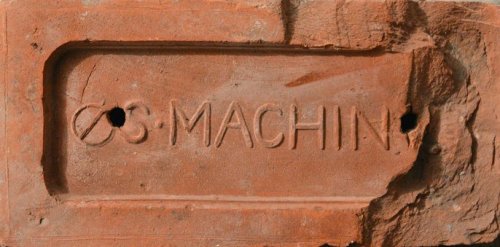
Ma to Me below Mi to My
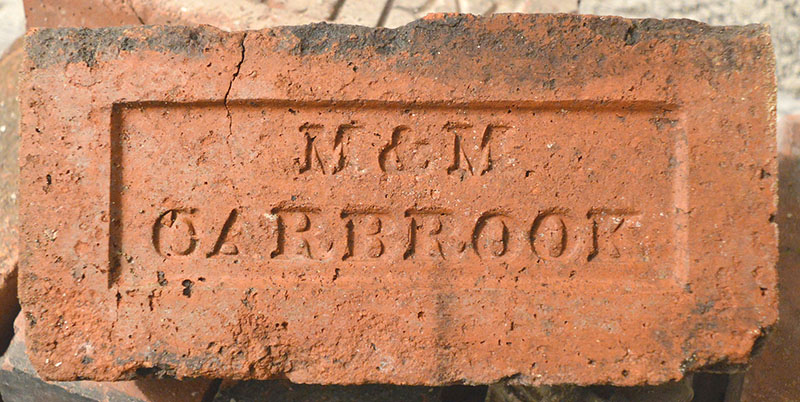

Origin not known - probably from the Sheffield area. Found Crookes, Sheffield by Frank Lawson.
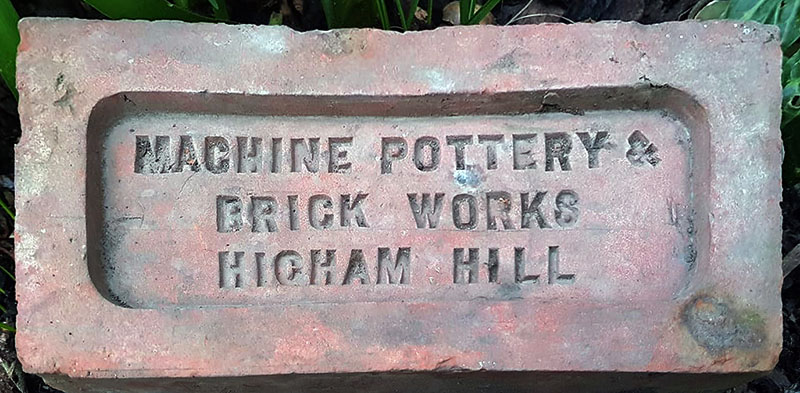
Made in Walthamstow. Photo by Simon Hurst.
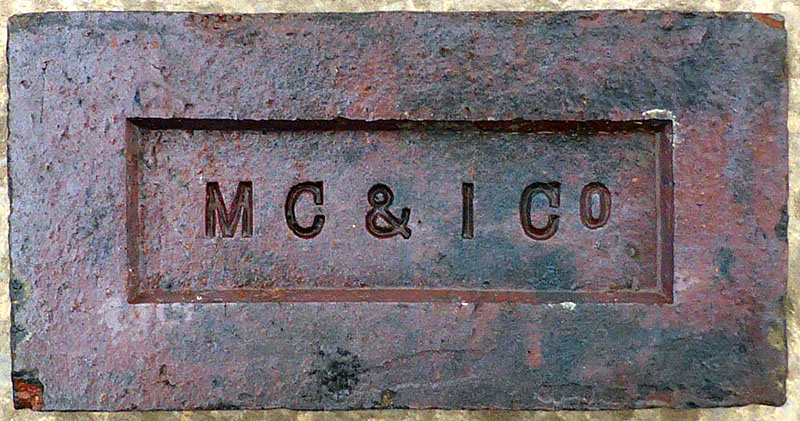
Found in a Macclesfield reclamation yard. The Madeley Coal and Iron Company Limited, and then Madeley Coal, Coke and Brick Company Limited, was at Little Madeley, Staffordshire from 1905 to 1924 when the business became Madeley Collieries Limited. Photo by Martyn Fretwell.
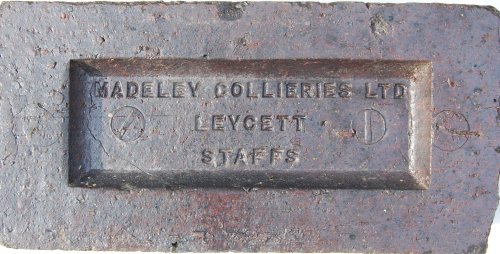
Madeley or Leycett Colliery was sunk 1880 and closed in 1957. It was located 5.5km west of Newcastle-under-Lyme, adjacent to the current M6 motorway - Paul Deakin, Collieries in the North Staffordshire coalfield, 2004. Image PRBCO.
Photo by David Kitching.
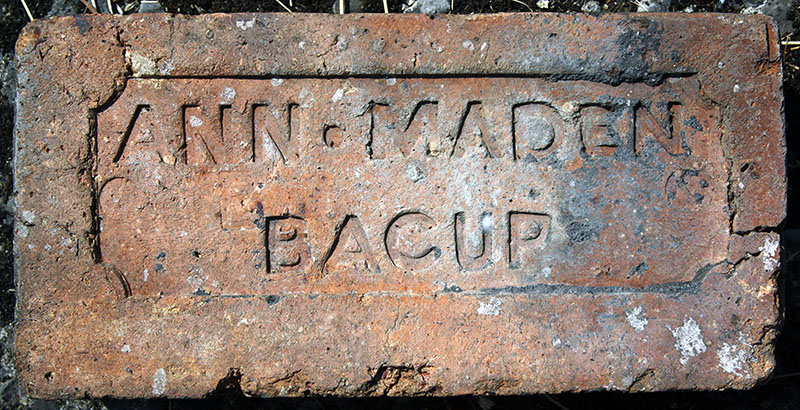
Ann Maden, Hogshead Colliery, Gauther Fold, Brittania, Bacup. Mining began in the late 18th century.Brick making started in the 1840's when the principal owners were Maden & Lord. By the mid 1860's Maden had died and his widow Ann Maden had taken over the business. She was succeeded by Henry Maden & Co. - her son. The brickworks closed in 1873. Info courtesy of Colin Driver.
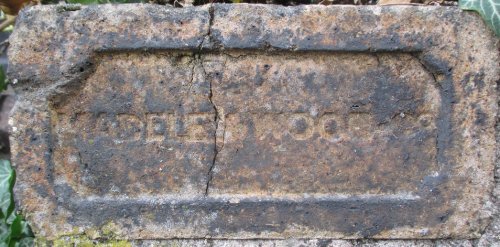
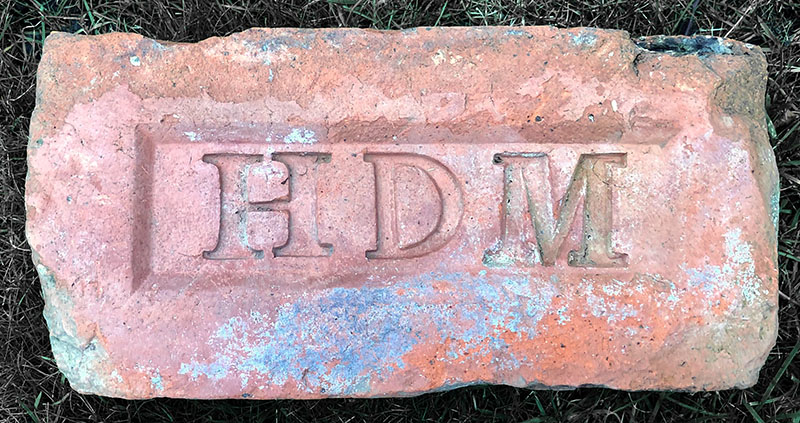
Henry Mainwaring was the proprietor of the Wolviston Tilery near Billingham in 1851 when he employed 15 people there and was still there until his death in 1861. This brick was found by Sarah Fawcett in south west Durham and is possibly a product of this works.
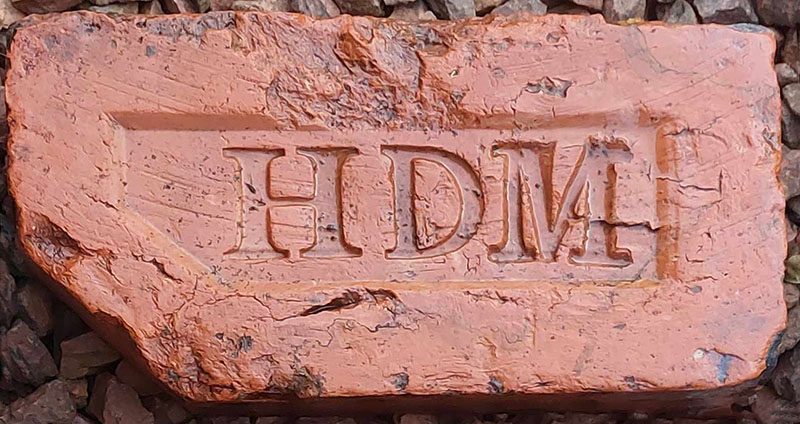
Photo by Mike Graham.
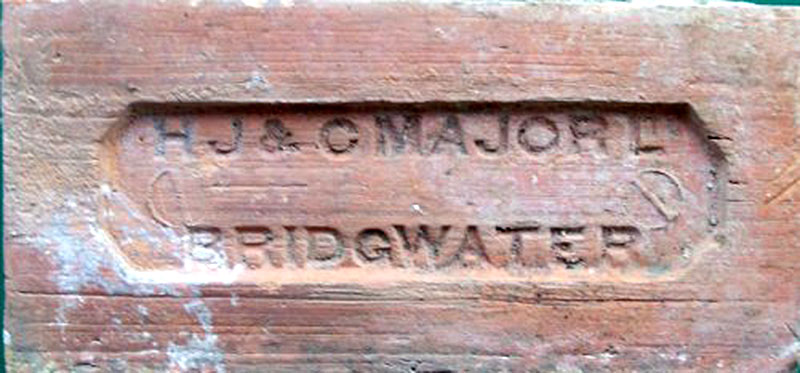
Found near the old RAF Andover airfield by Andrew Farthing.
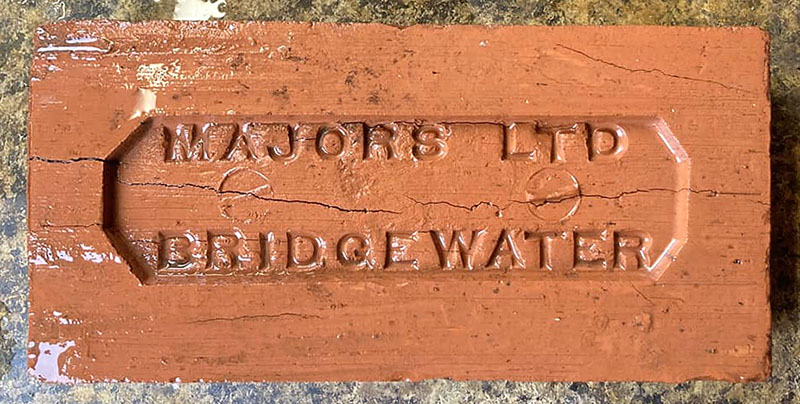
The Major business is listed in trade directories from 1872 - 1939. Photo by Ian Williams.
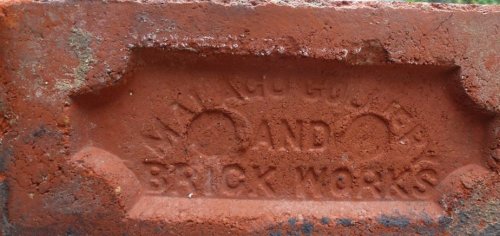
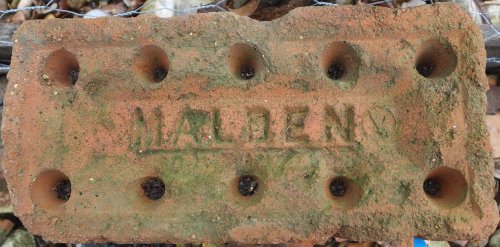
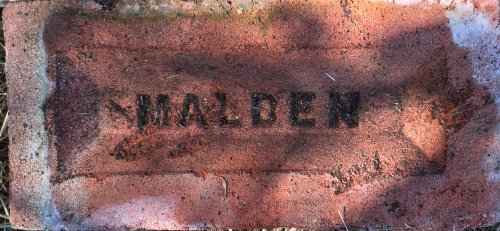
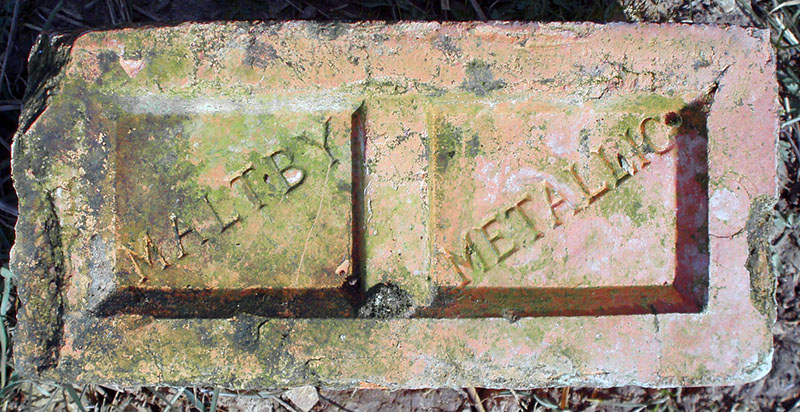
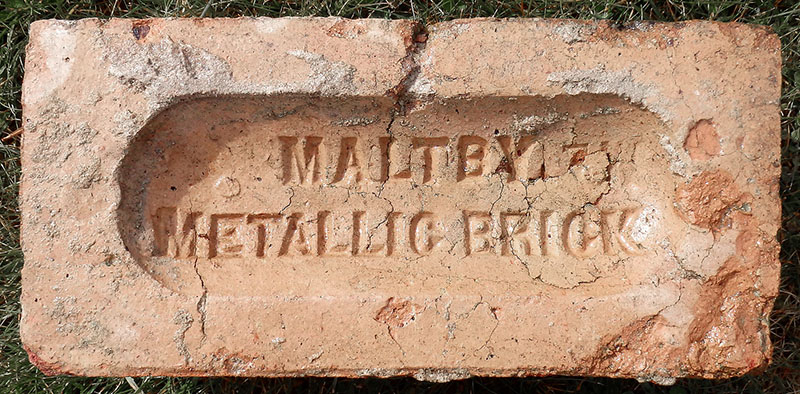
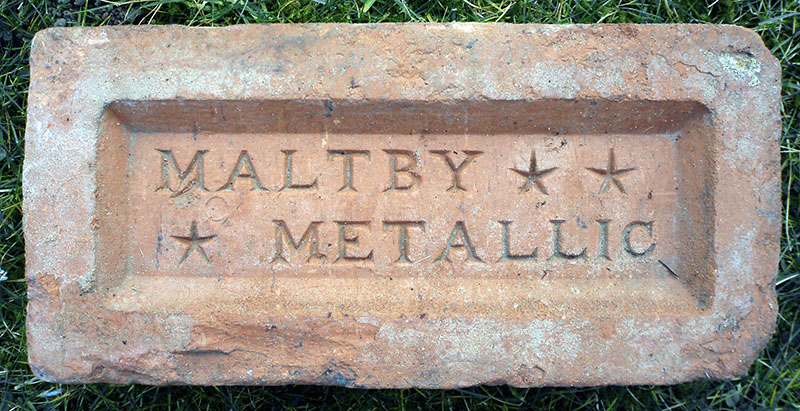
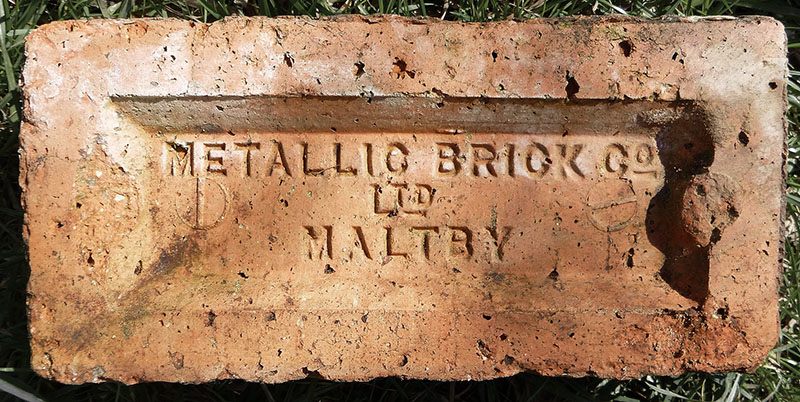
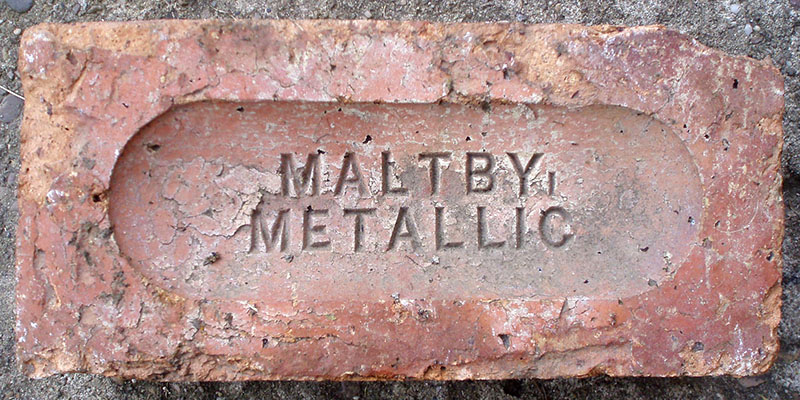
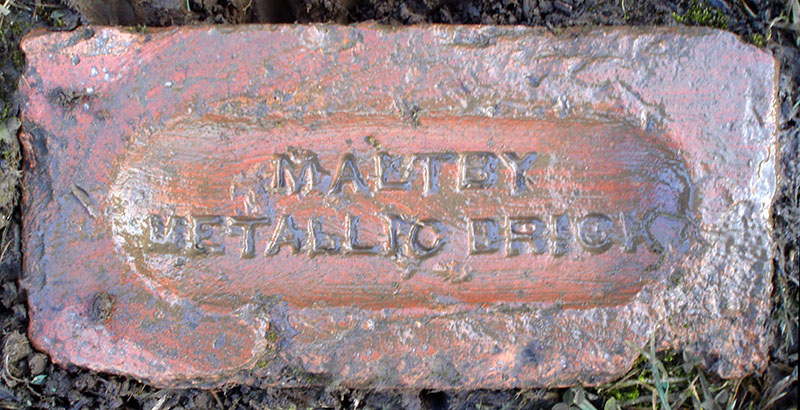
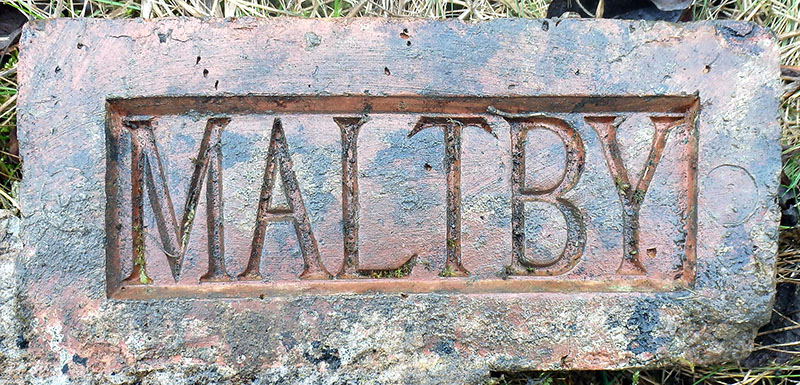
Maltby Metallic Brick Co., Rotherham Road, Maltby, S.Yorks. Photos by courtesy of the Frank Lawson collection.

Spotted in Derbyshire by Simon Patterson.
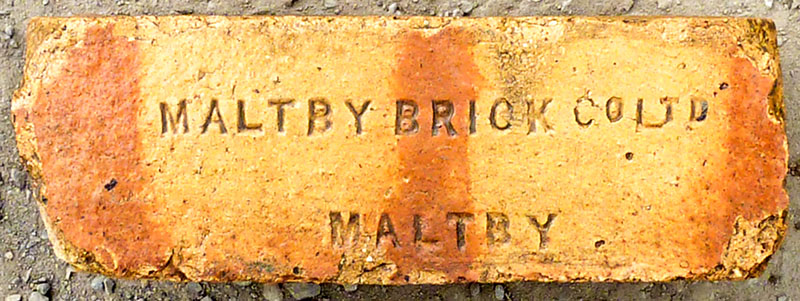
Photo by Martyn Fretwell.
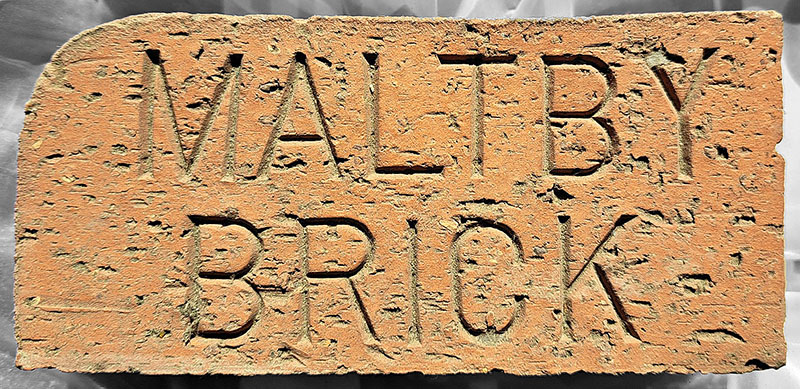
This is a small sample brick. Photo by George Walker.
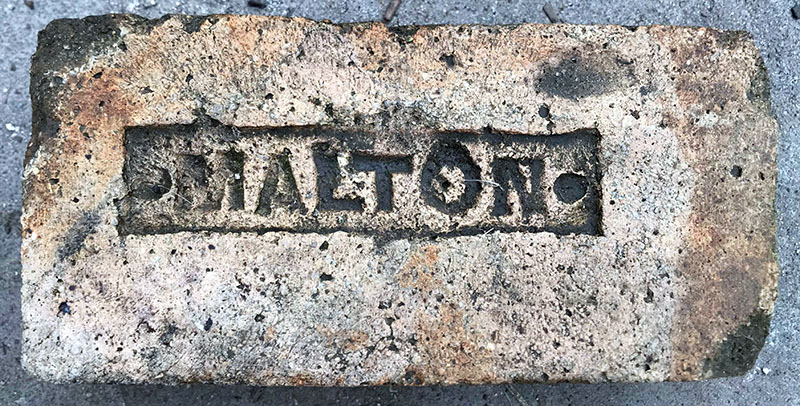
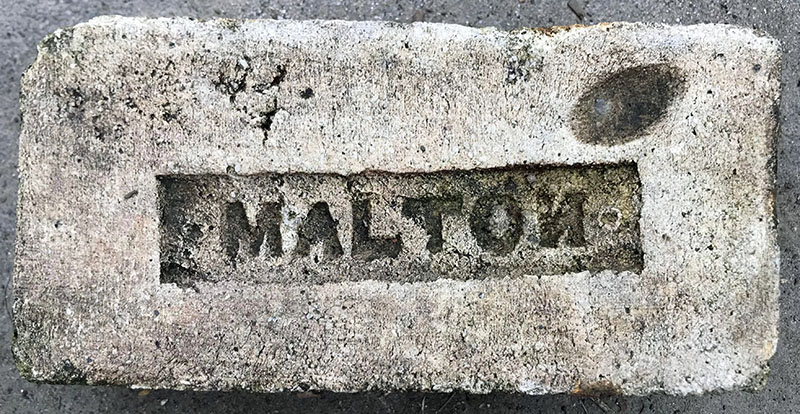
Manufactured at Malton Colliery, County Durham. Photos by Steven Tait.
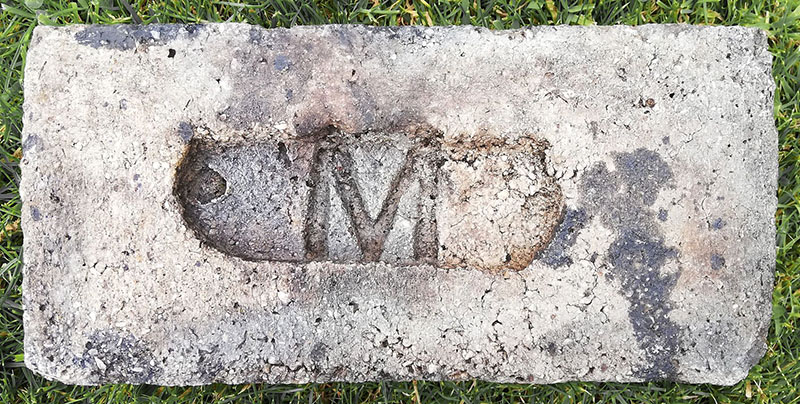
Photos by Chris Tilney
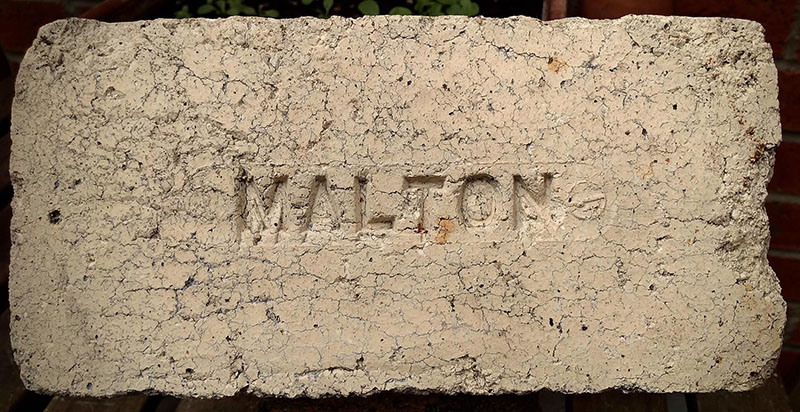
Photo by Tony Gray.
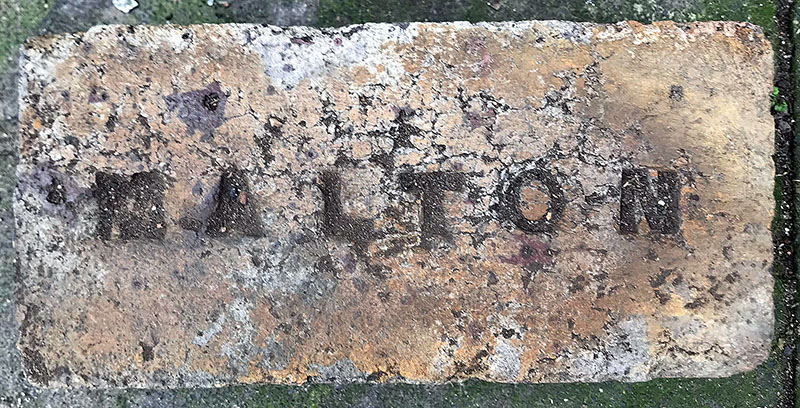
Photo by Steven Tait.
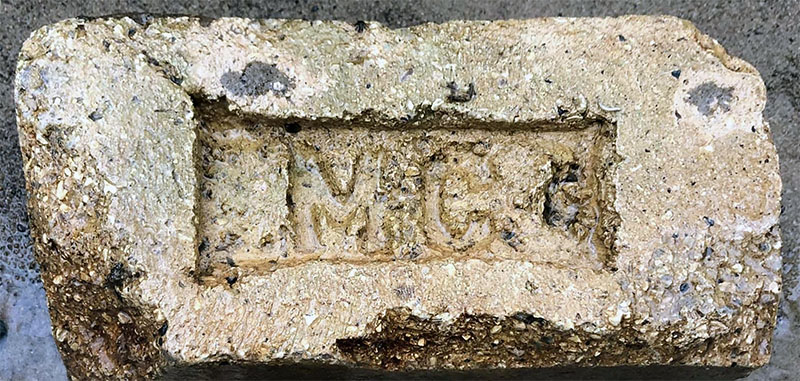
Photo by Vicky Carr.
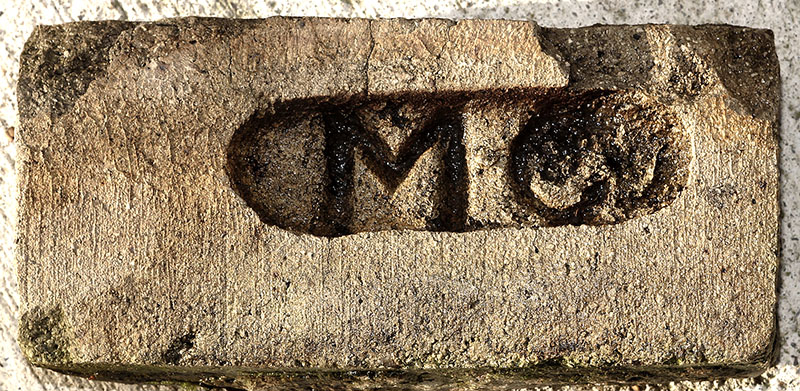
Photo by Nigel Dodds.
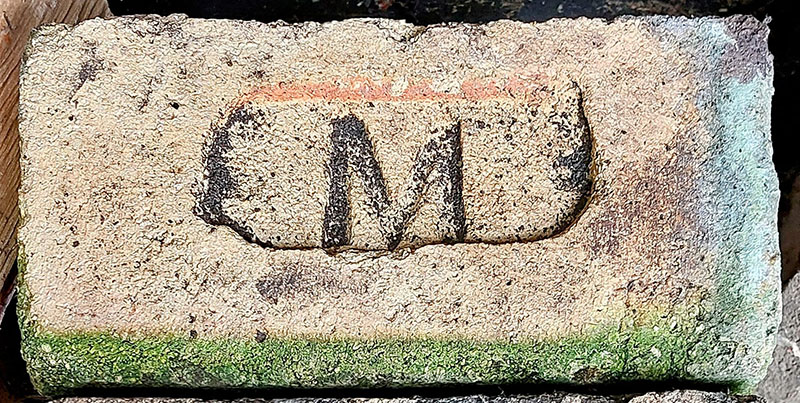
Photo by Ben Coult.
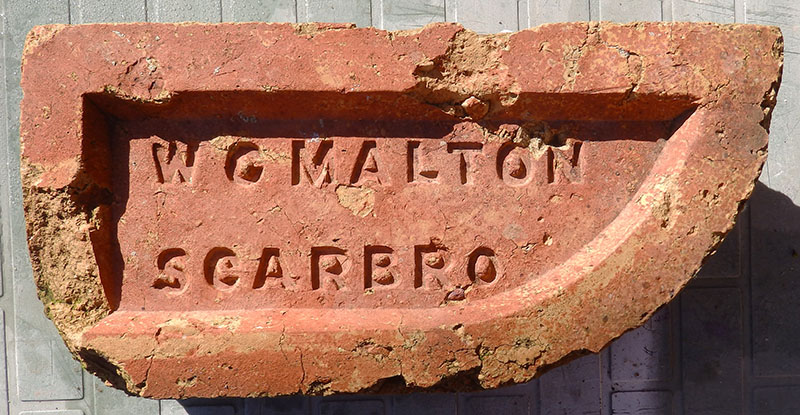
Photo by Nigel Furniss.
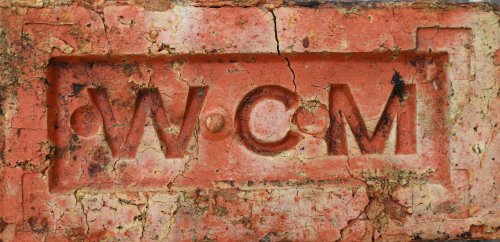
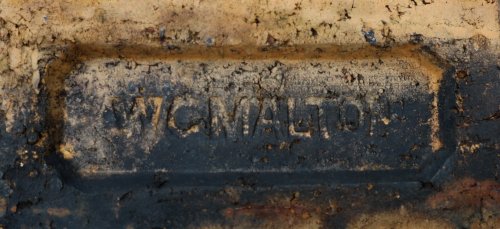
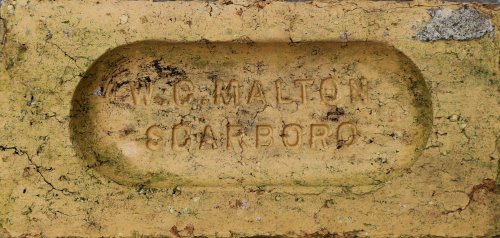
All three bricks are products of the Scalby Road Brickworks in
Scarborough. This was one of four brickworks in the town with
quarries working the soft shales of the Upper Estuarine Series
which were crushed for brick making. Scalby Road brickworks
were set up by a local building and civil engineering contractor
William Coverdale Malton (hence WCM) in the 1880s (I dont have an
exact date yet). On his death in 1891 they were run by his wife
Ellen until his sons entered the businesswhen ity became Wm Malton
and Sons. Brick production ceased in 1956 and the site is now
built over (Malvern Crescent, Scarborough). Photos and info
by Chris Hall
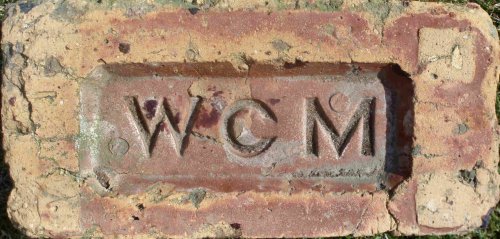
Photo by courtesy of the Frank Lawson collection. Found in
Ravenscar, N Yorks.
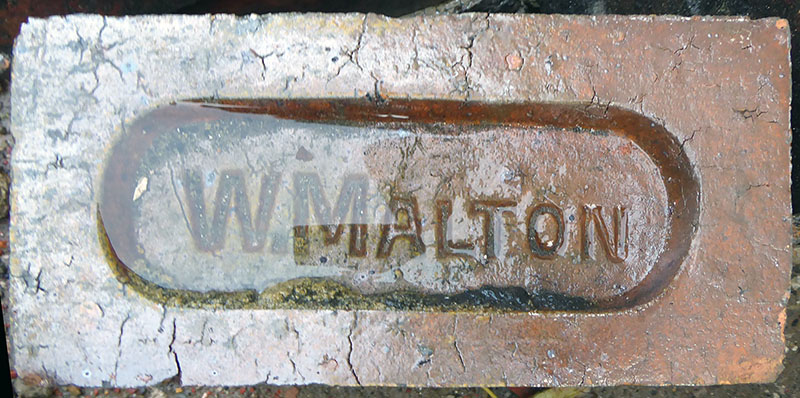
Photo by John G de Nobriga.
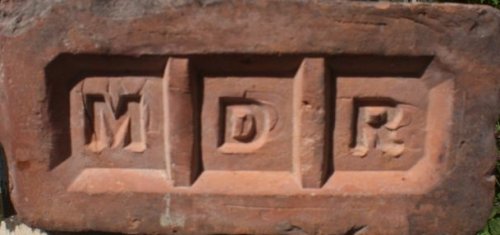
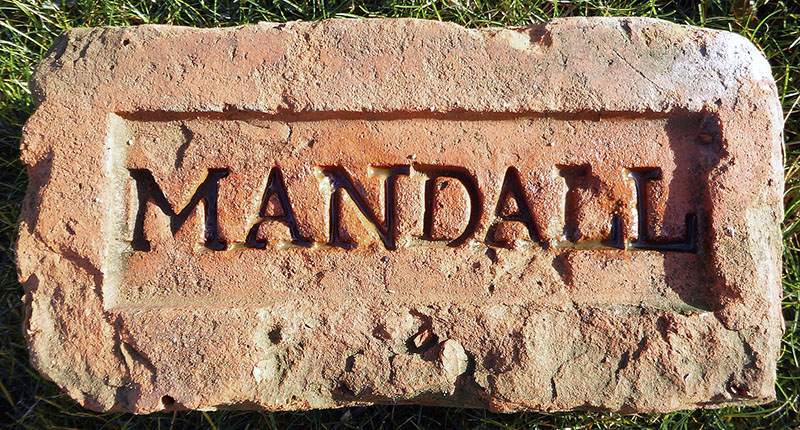
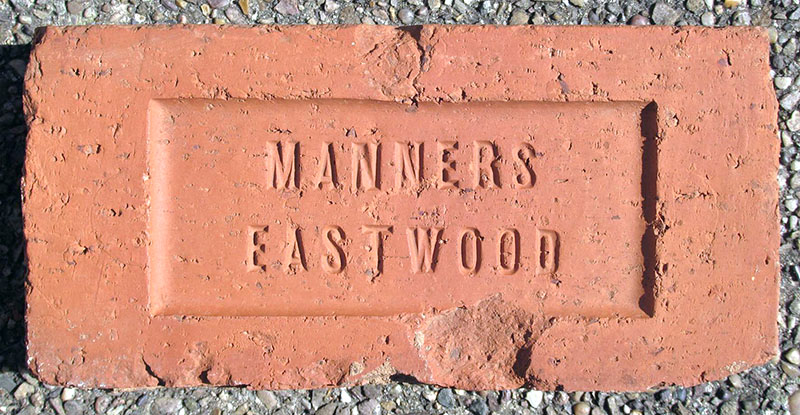
In 1920 the Manners Brick Company was formed from the Eastwood Brick and Pottery Company and the Erewash Brick, Pipe and Pottery Company. The site being next to the Great Northern Railway line, on its Derbyshire extension and the Erewash Canal. The brickworks closed in 1977. Photo and information by Martyn Fretwell.
A 1927 photo taken inside the works can be viewed here.
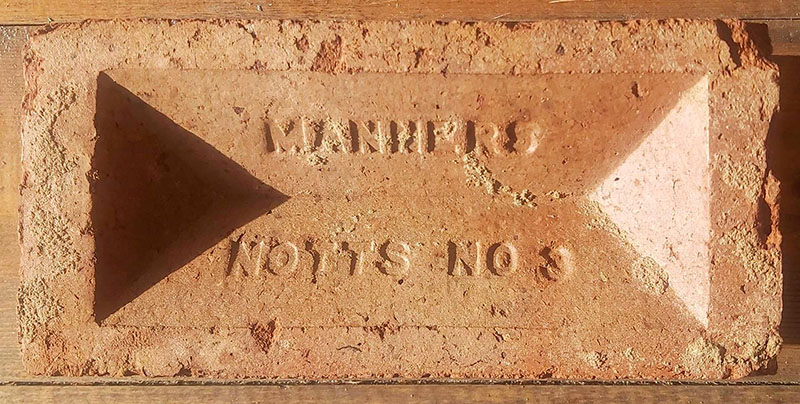
Stamped No. 3, photo by Richard Harvey.
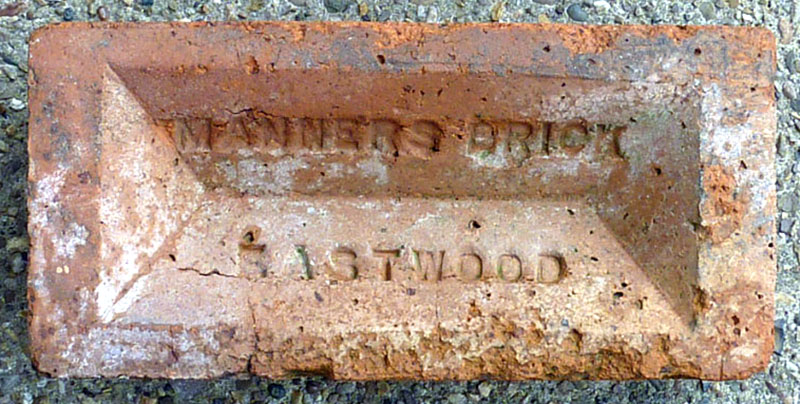
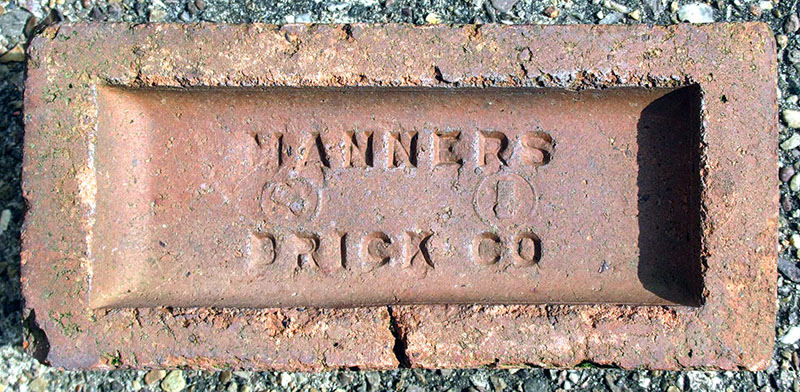
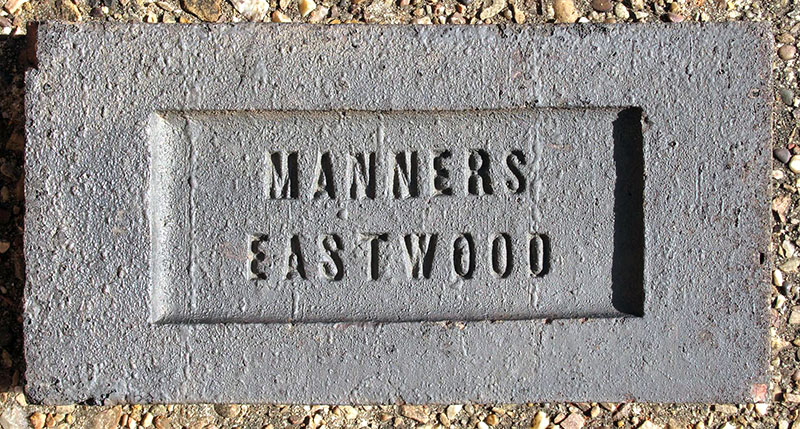
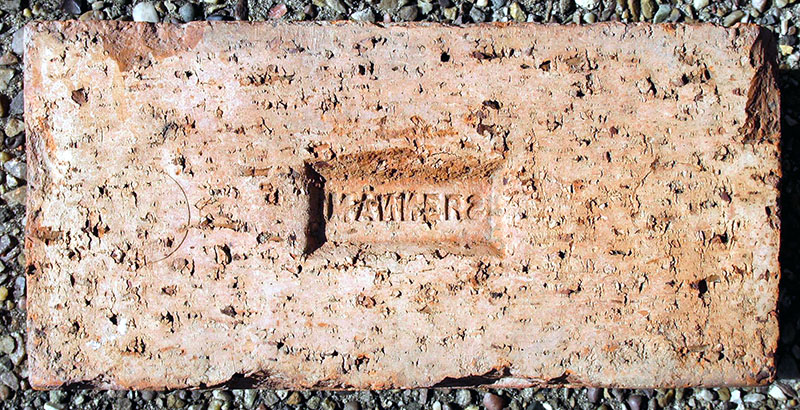
Photos by Martyn Fretwell.
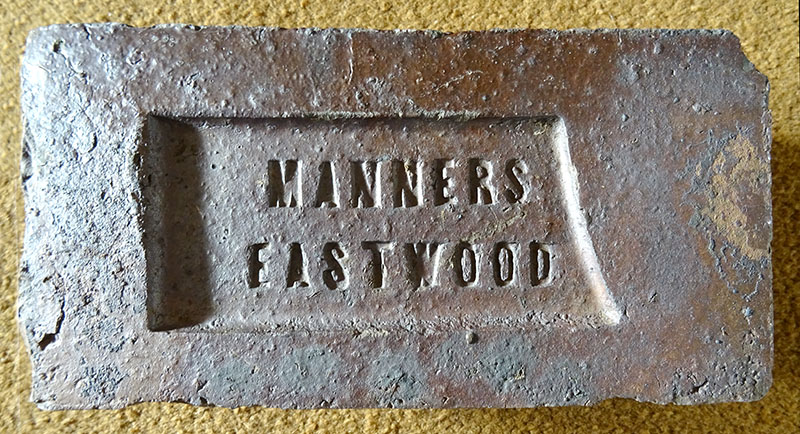
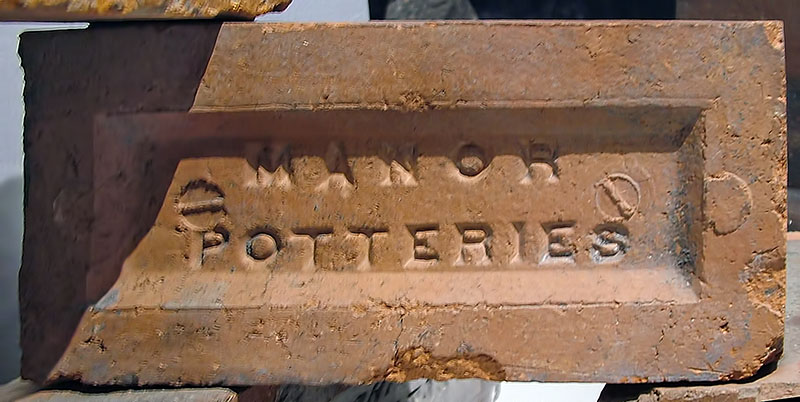
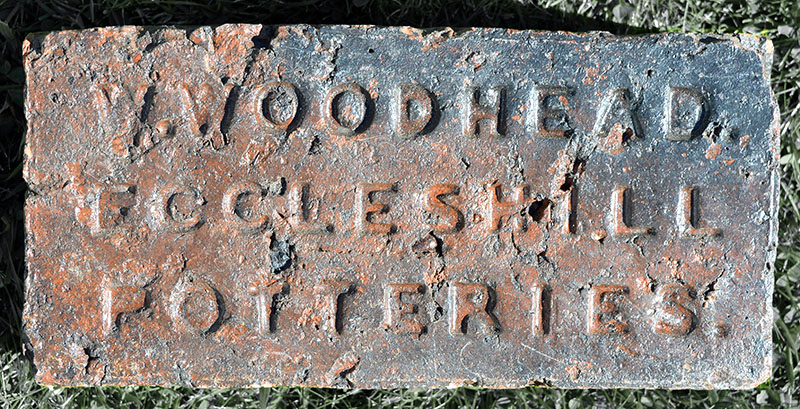
The Manor Pottery, Undercliffe Road, Eccleshill was established by Jeremiah Rawson, Lord of the Manor of Bradford, in 1837. It was purchased by Mr William Woodhead, a good geologist and chemist. Woodhead's eldest daughter Hannah married William Marshall who in turn owned the works. By 1867 the products had been switched from pottery to brick, firebricks and sewer-pipes. In June 1873 a valuation of the works described a 12 acre site consisting of: manor house, cottages, engines, sheds, land, Hoffman brick kiln and two other kilns were worth £8587. The first block of houses in Undercliffe Road, Eccleshill ('Terracotta Row - 1854') were linked with the works being, unusually for Victorian Bradford, brick built. Bricks marked [ECCLESHILL] and [WW] are known in addition to the above. According to trade directories the Undercliffe Road kilns were still in operation in 1912. At some stage in the early 20th century the works were closed; the chimney was felled on 12th November 1921. Information by Derek Barker, photo by Frank Lawson.
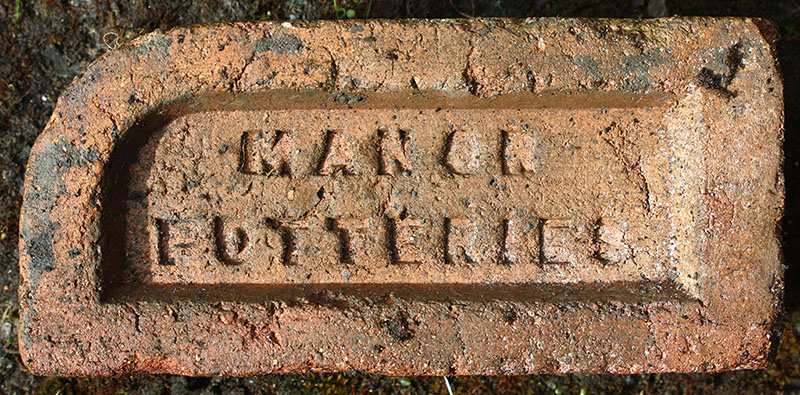
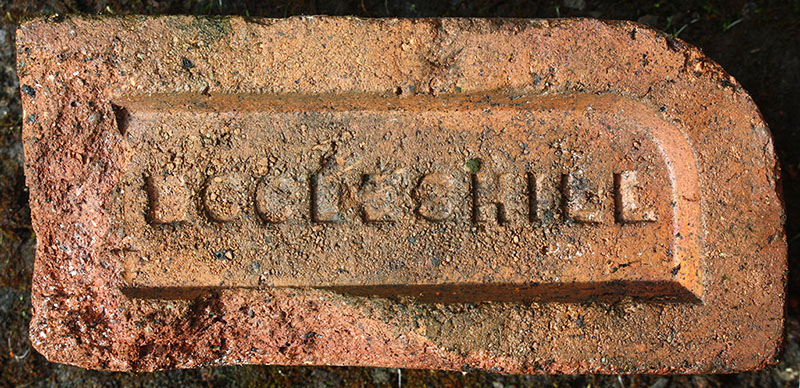
Photos by David Kitching.
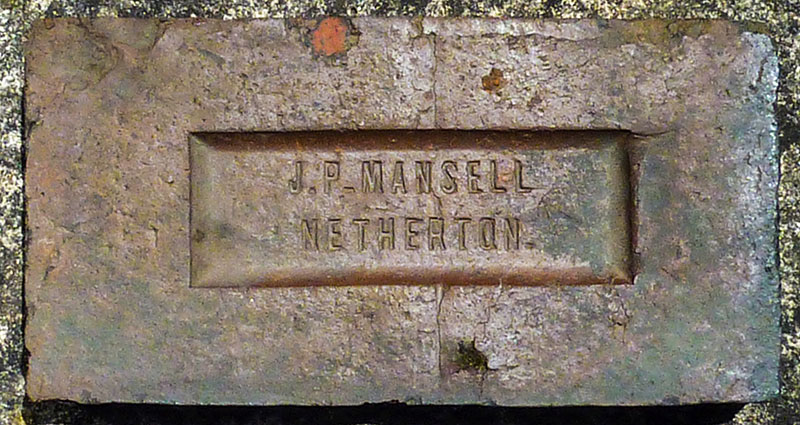
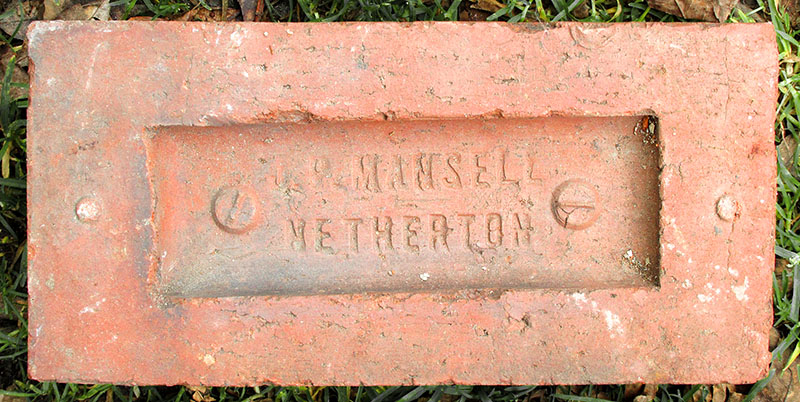
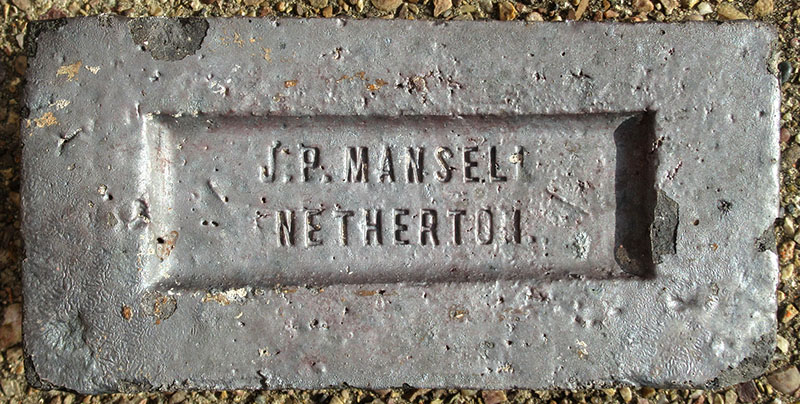
James Philip Mansell was originally a blacksmith and then invested in a range of pubs, a brickworks and a colliery in the Dudley and Netherton area. He also held a significant interest in the Dudley Empire Music Hall. J. P. Mansell is listed as
brickmaker in Kelly's 1899 edition as James P. Mansell, (blue
bricks a speciality), The Dixon's Green Endurance Brick Works,
Netherton, Dudley. This works opened in 1898. Mansell died suddenly in May 1906 at the age of 43. Photos and info by Martyn Fretwell.
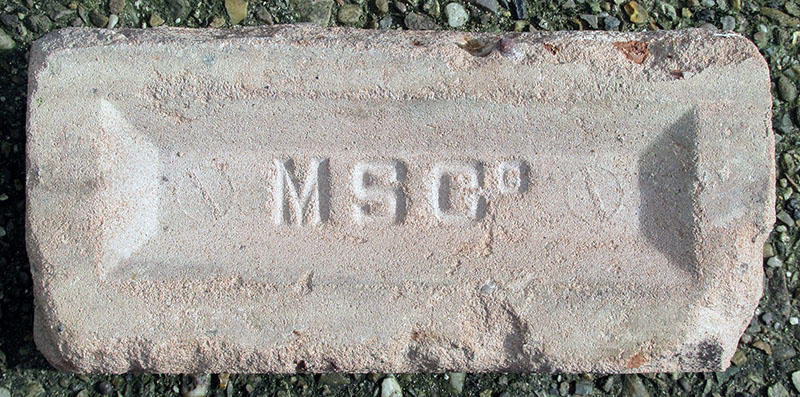
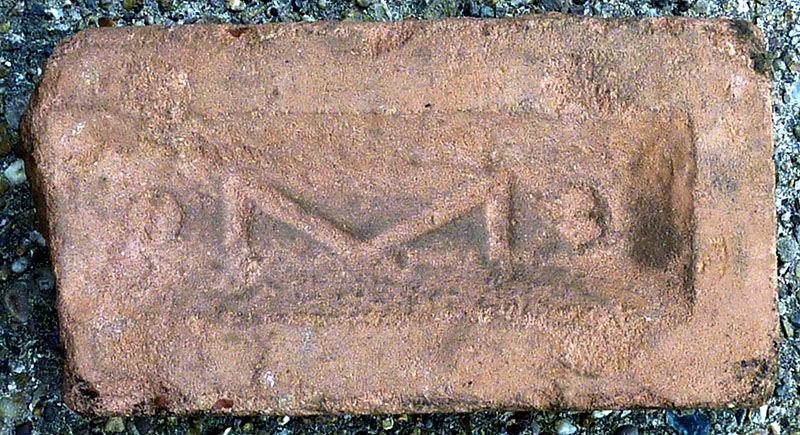
The Mansfield Brick Company, a subsidiary of Mansfield Sand Co. produced calcium silicate bricks from 1926 to the mid 1990's at its Sandhurst Avenue site. This brick came from a 1930's/40's house recently demolished, situated very close to were it was made. In 2010 the Company relocated to Crown Farm Way, Mansfield and now produces bespoke concrete bricks and products. Photos and info by Martyn Fretwell.
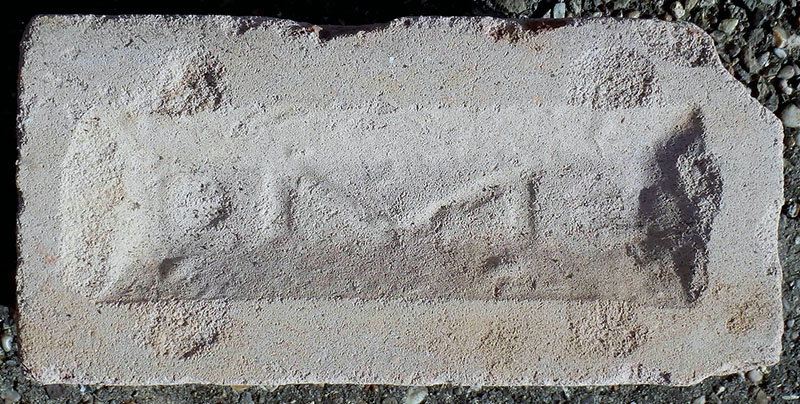
Photo by Frank Lawson.
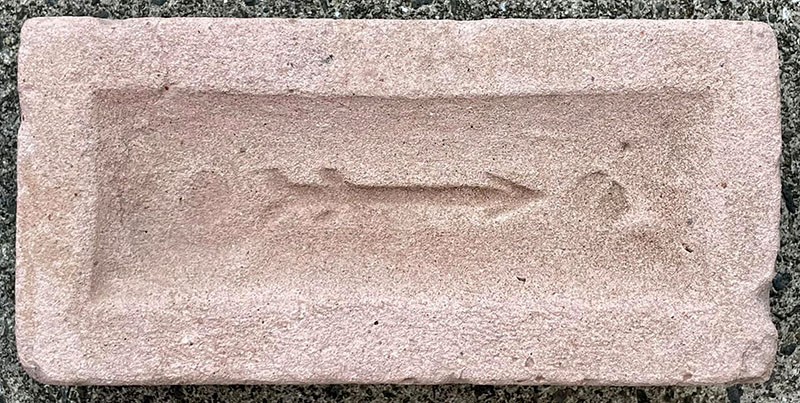
Photo by Phil Burgoyne.
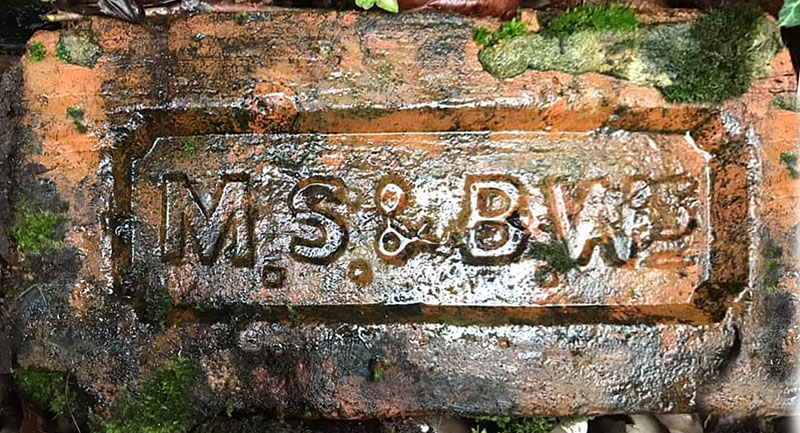
Photo by Greg Sirdifield.
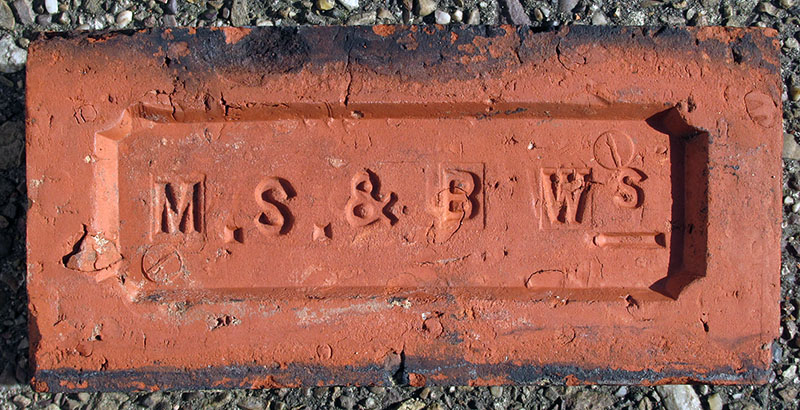
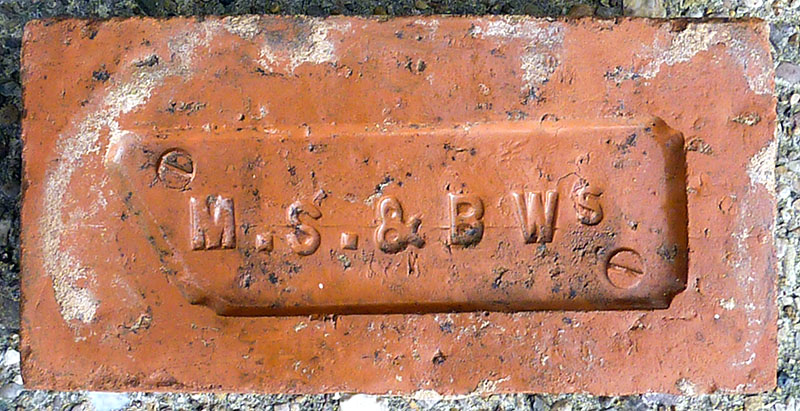
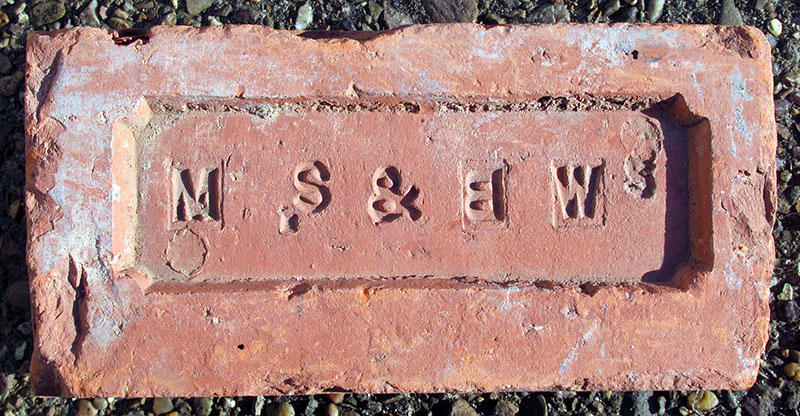
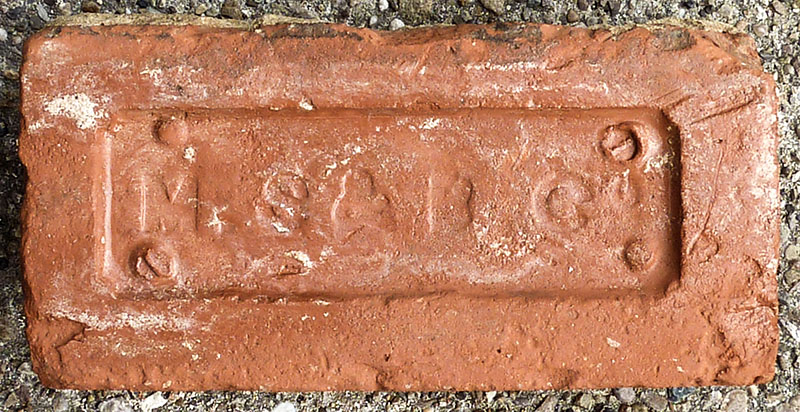
This brickworks was located at the
end of Moor Lane, Mansfield, on land running down to the railway. It now has
flats built on it, with a football field where they dug the clay. Photos by Martyn Fretwell.
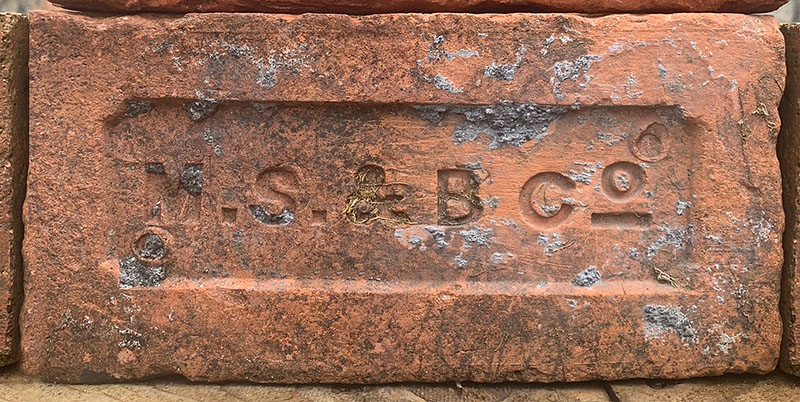
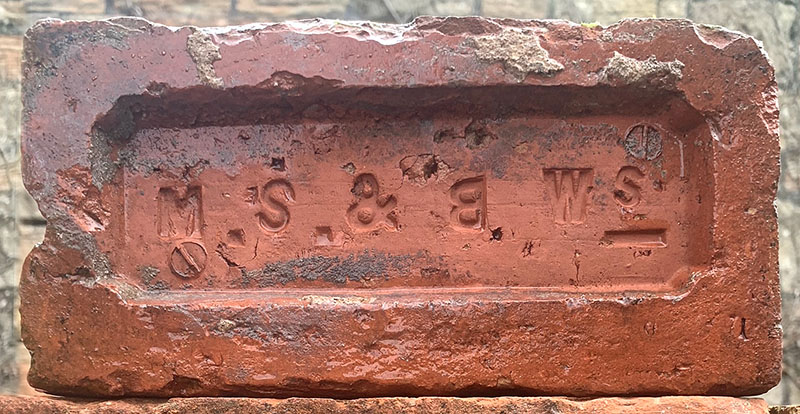
Photos by Jonathan Light.
Horace Rendall Mansfield, Hermitage Works, Whitwick, Leicester is recorded as brickmaker in Kelly's 1899 to 1912 editions. Mansfield was an MP for the Coalville Area The works was famous for Terra Cotta mouldings. It was eventually sold to National Star from South Wales. He also had a salt glazed pipe works at Church Gresley. Thanks to Peter Harris and Martyn Fretwell for the info.
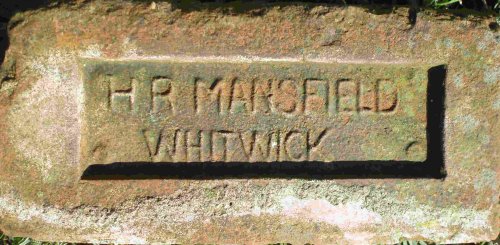
Photo by courtesy of the Frank Lawson collection.
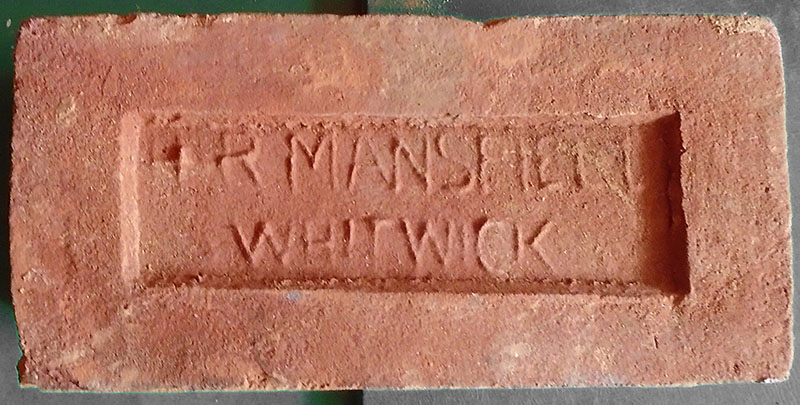
Photo by Andy Farthing.
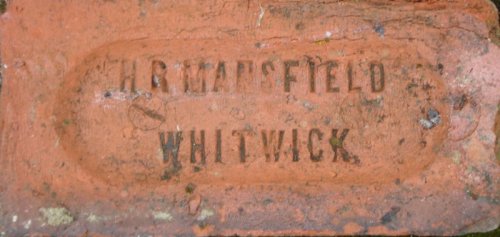
Found in Bolsover by Simon Patterson
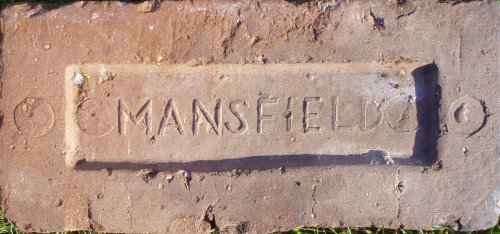
Photo by courtesy of the Frank Lawson collection.
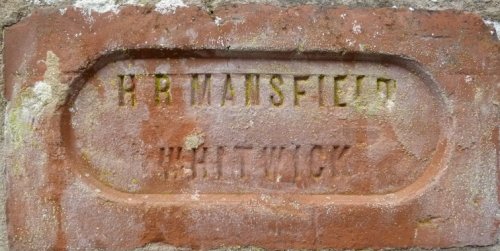
Photo by Peter Harris.
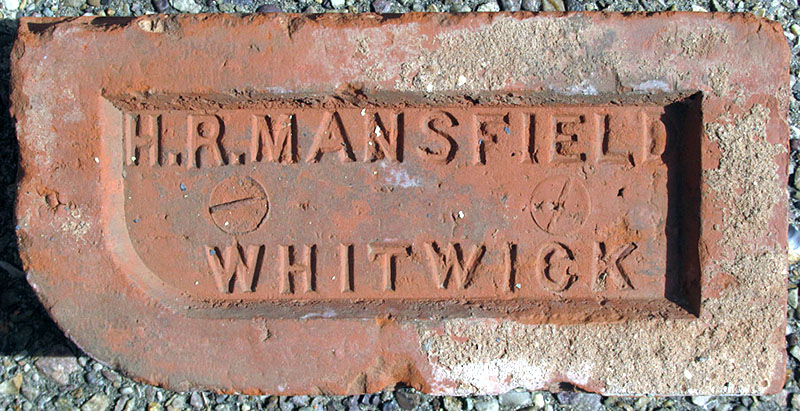
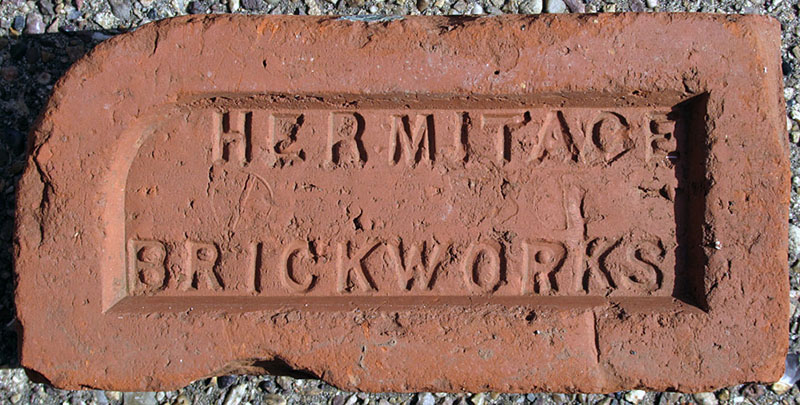
Photos by Martyn Fretwell.
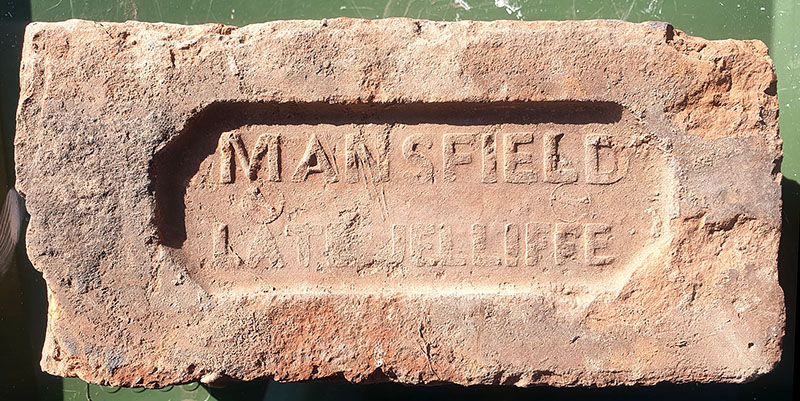
Photo by Nigel Furniss.
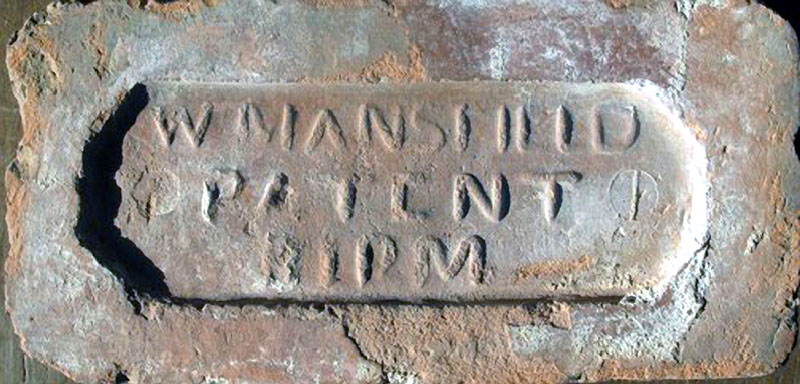
Photo by William Whitehead.
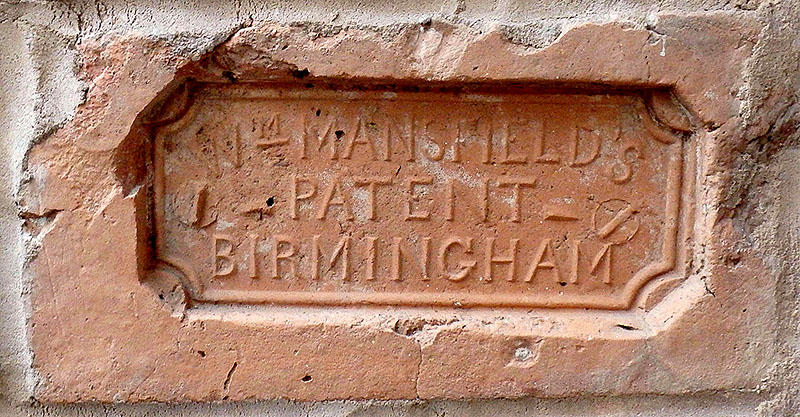
William Mansfield operated at
the Atlas Works, Garrison Lane, Birmingham from 1858 to 1872. He took over the business from Thomas Jelliffe who is listed in 1853 asPatent Brickworks, coal merchant & brickmaker at Garrison St. Mansfield was declared
bankrupt in 1872 & his yard was taken over by George
Savage. Photo by Frank Lawson.
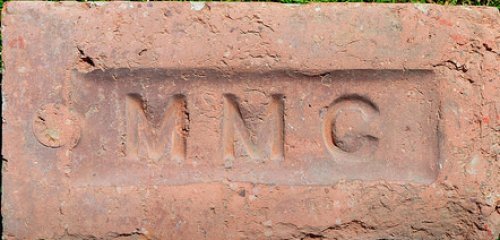
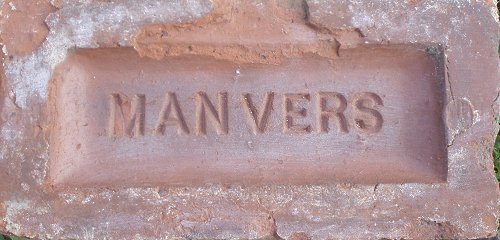
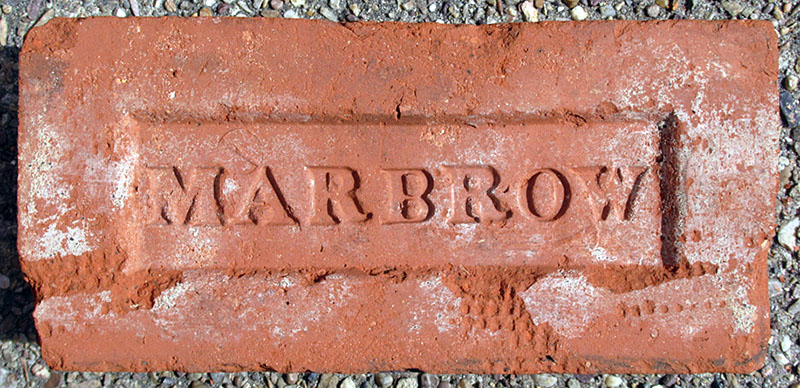
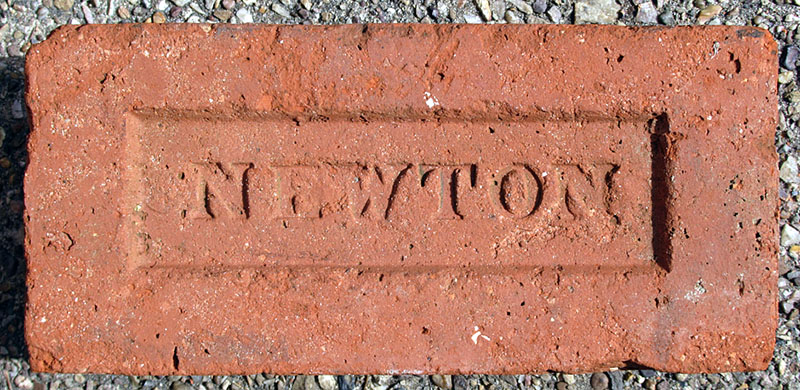
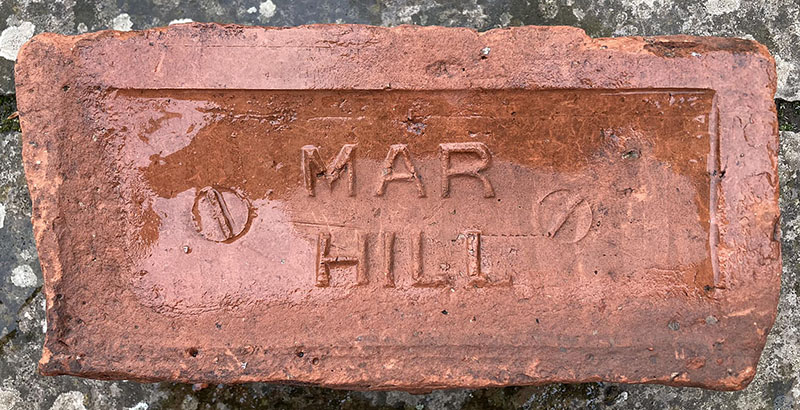
Mar Hill, Carlton, Nottingham. Photo by Mike Chapman.
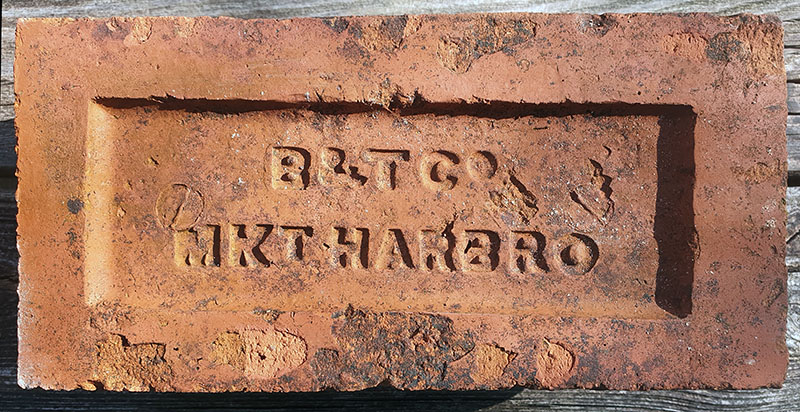
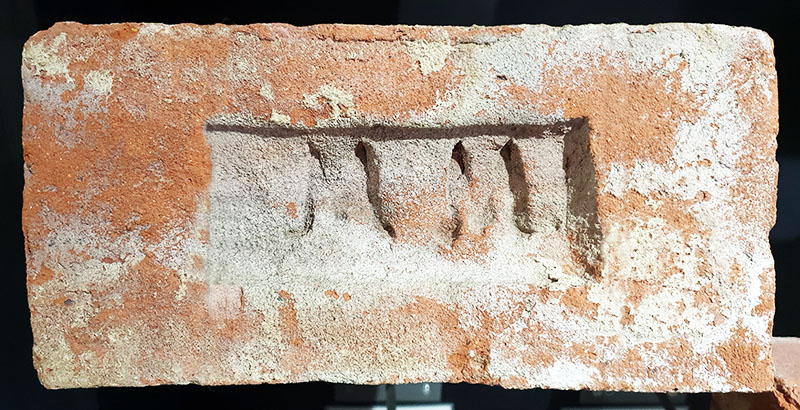
Combe Farm brick yard operating 1870 - 1930. Shown on 1878 OS map as having 1 kiln, ' L ' shaped building & 4 long drying sheds. 1898 - 1938, layout changed, drying sheds gone, modified ' L ' shaped building with at least 2 kilns. On the edge of Blenheim Park, the Duke of Marlborough's palace, Woodstock, Oxfordshire. Photo and info by Nigel Furniss.
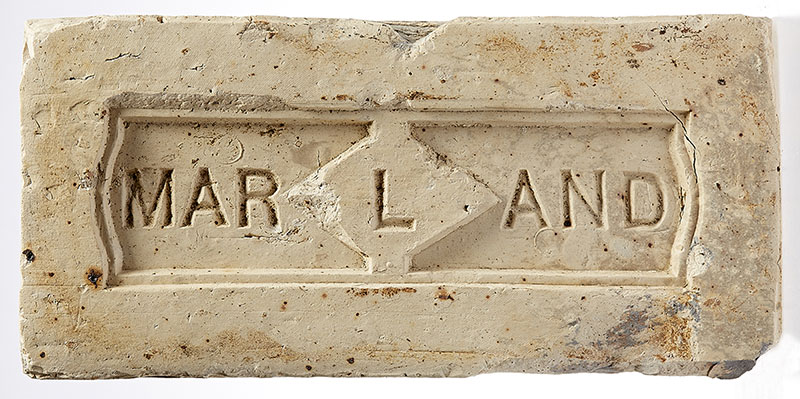
Made at Marland Moor, near Petrockstowe, Devon. The works closed in
1940.
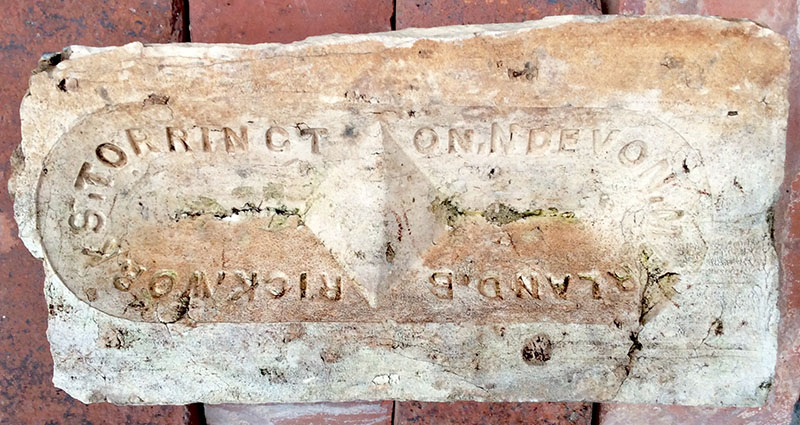
Photo by Simon Fogg.
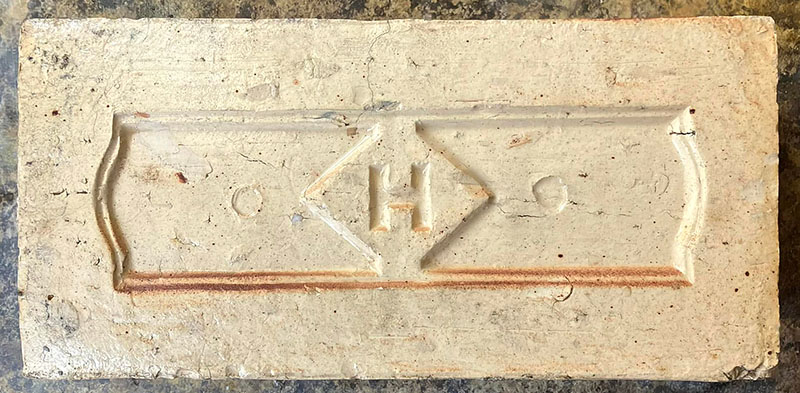
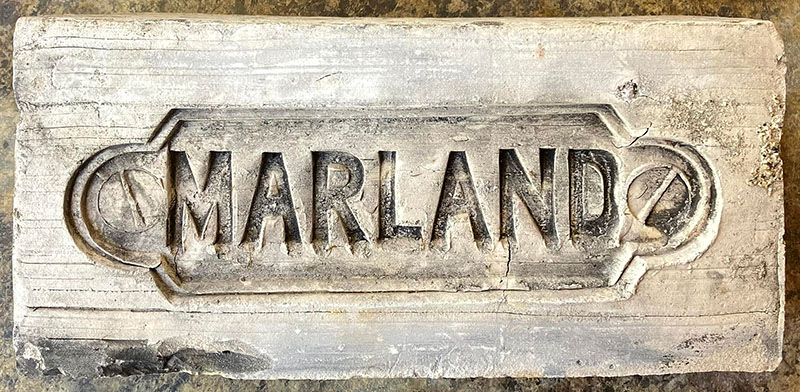
Photos by Ian Williams.

Photo by Martyn Fretwell courtesy of the Bill Richardson
Collection at Southwick Hall.
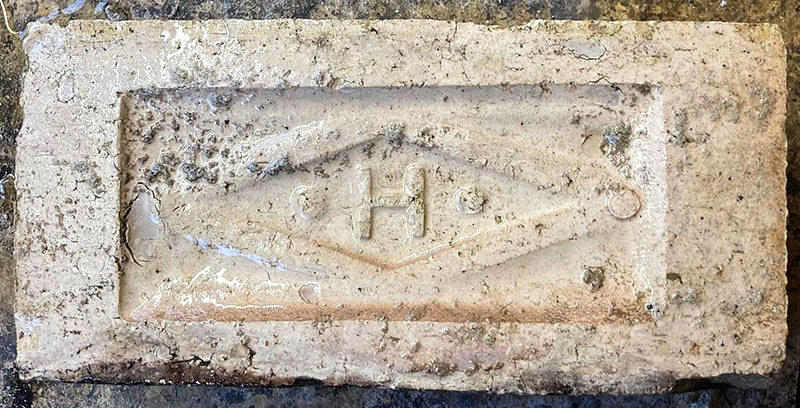
Found in Bodmin. Photo by Ian Williams.
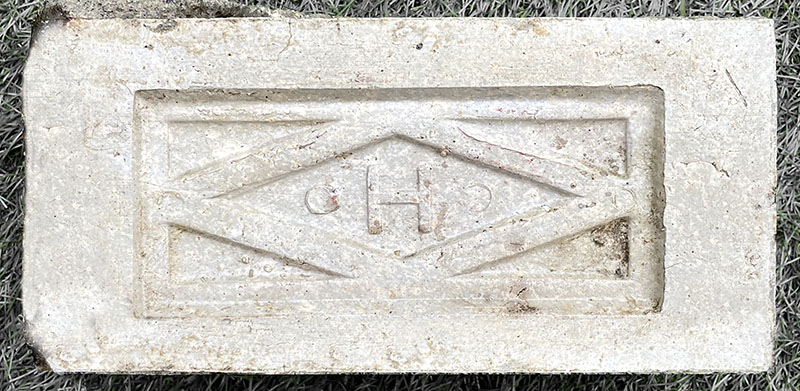
Photo by Bruce.

Found on the River Dart near Totnes. Photo by Ian Forrester. There is still some debate about the actual provenance of these bricks marked with a circular 'H' and which are found in Devon and Cornwall.
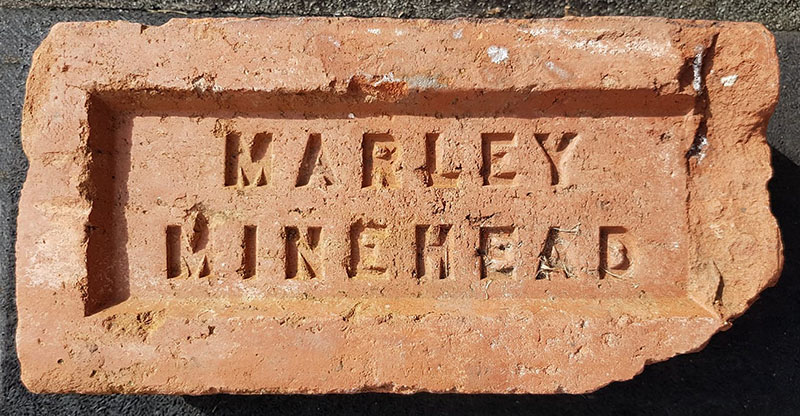
Kelly's Directory 1914, John B Marley, Irnham Road, Minehead & Victoria Brick Works, Alcombe, Taunton. Photo by Drew Dickson.
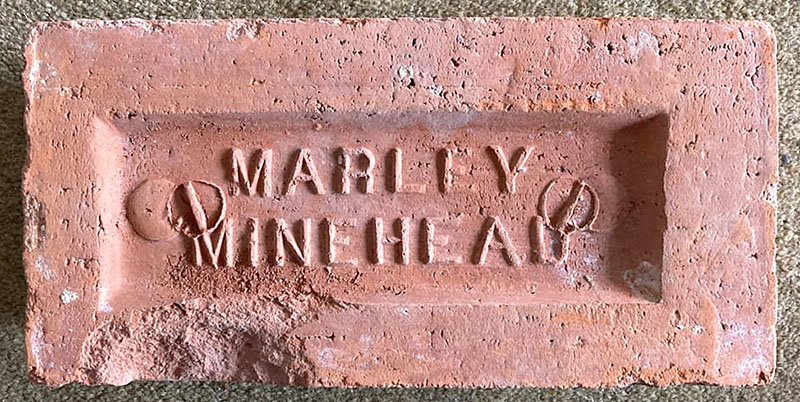
Photo by Mike Chapman.
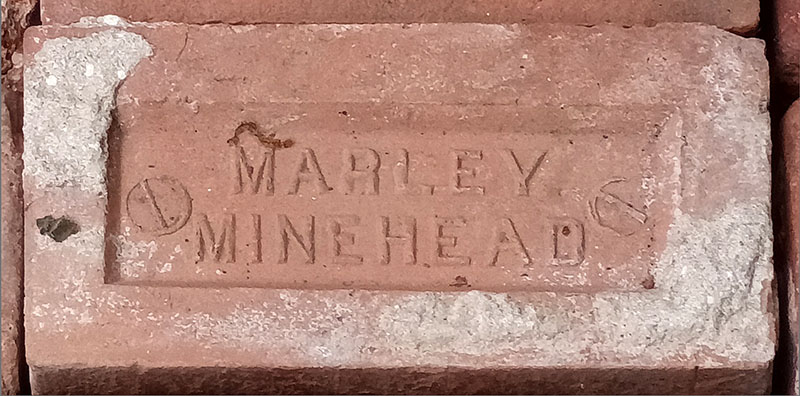
Photo by David Kitching.
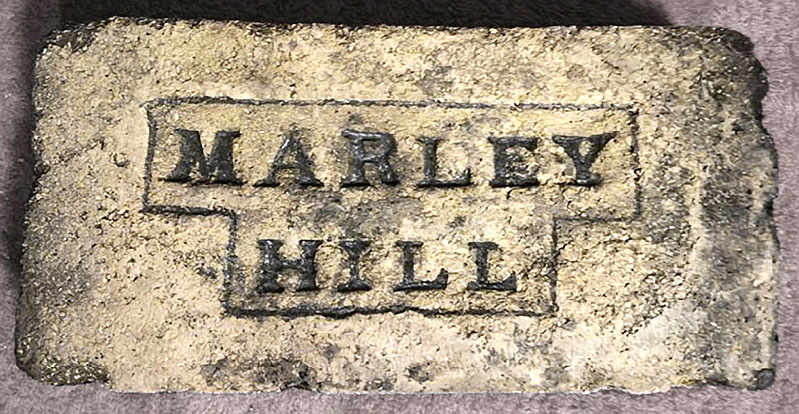
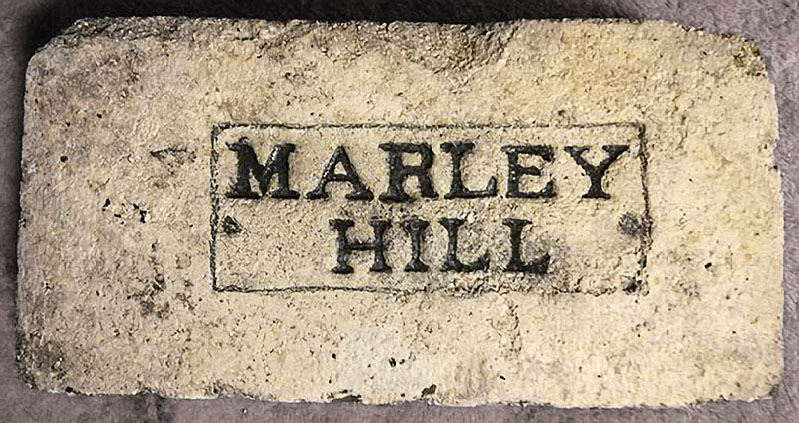
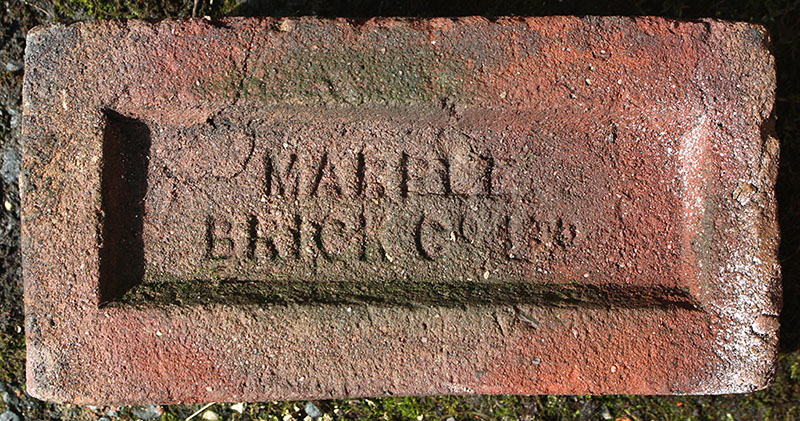
This brickworks in Marple, Cheshire was short-lived due to the poor quality of the raw material used to make them. The bricks tended to return to dust rather quickly when faced with the weather.
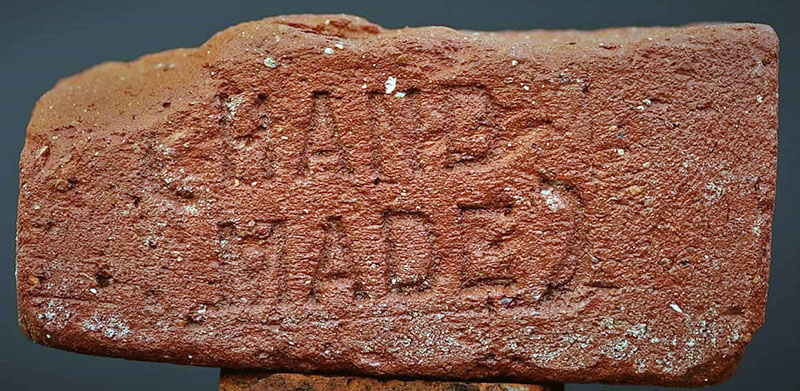
Photo by Henry Lisowski.
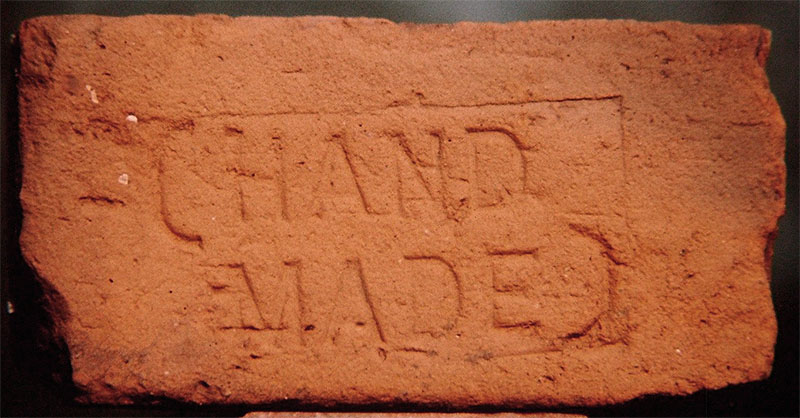
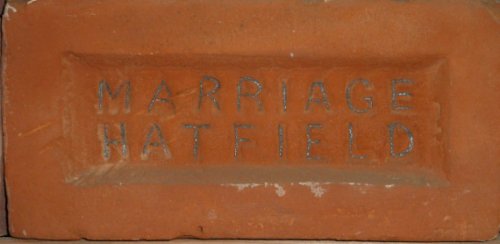
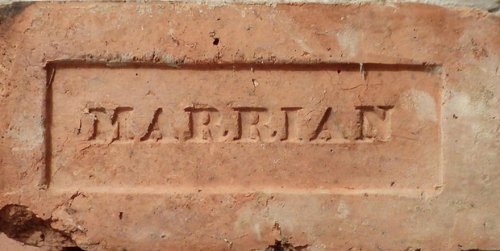
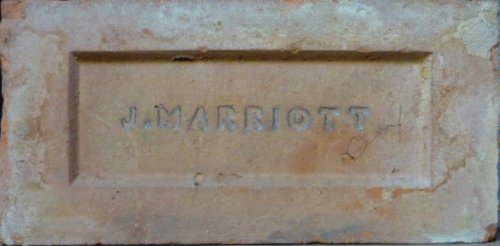
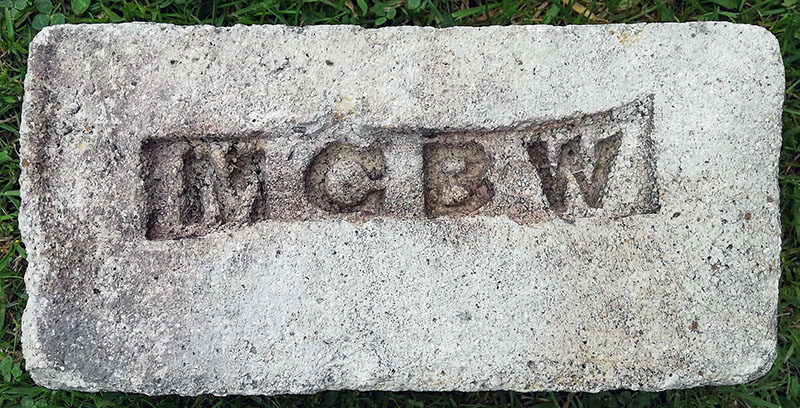
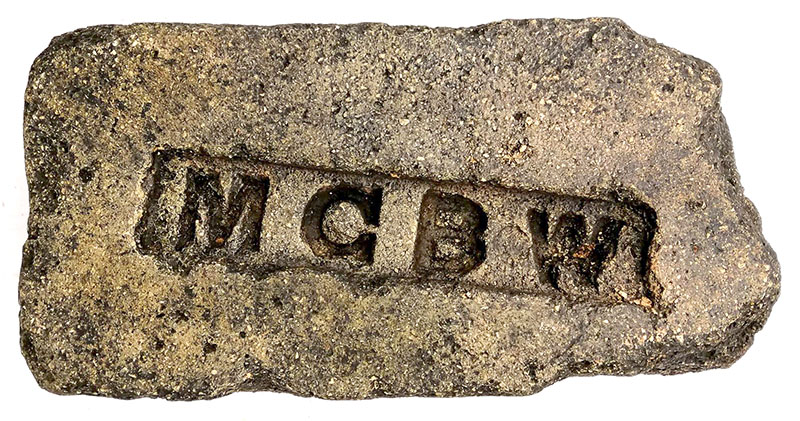
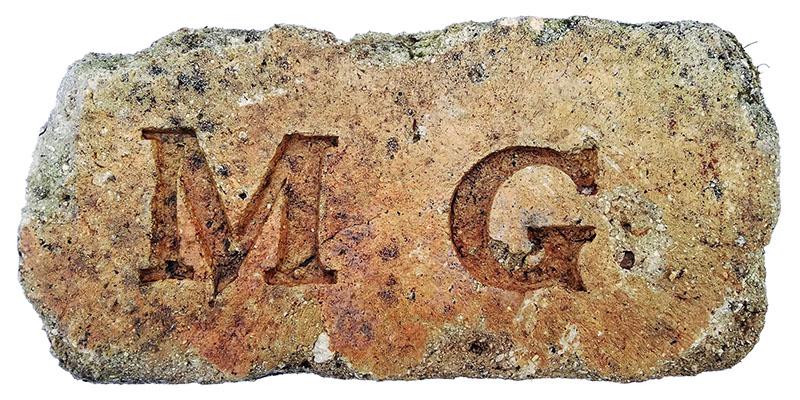
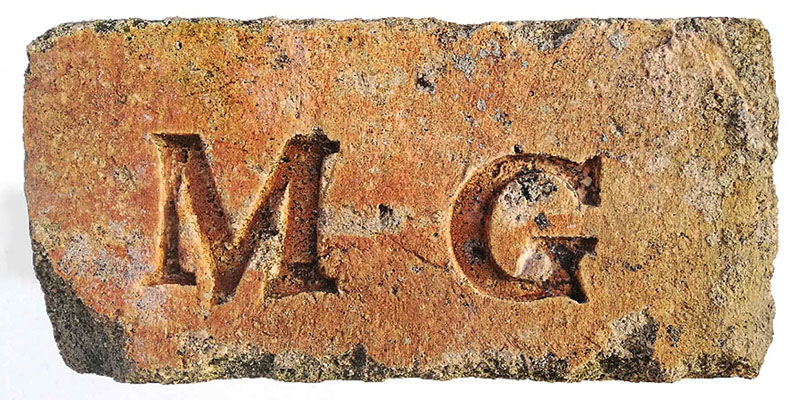
Photos by Chris Tilney.
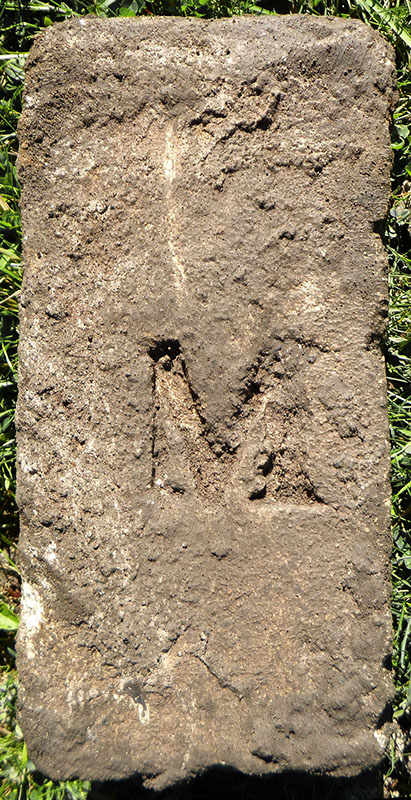
Marshall Green Brick Works of Witton le Wear. Photo by Frank Lawson.
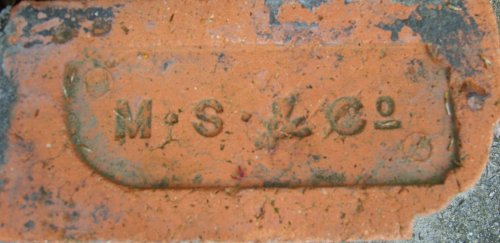
Marshall Sons and Company were an engineering firm who made traction engines, etc. at Gainsborough, Lincolnshire. The factory was built from bricks made from clay out of the hillside where the factory stood. On the other side of the brick it is stamped Clayton Patent, this was the brick making machine. Photo and info by David Rogers.
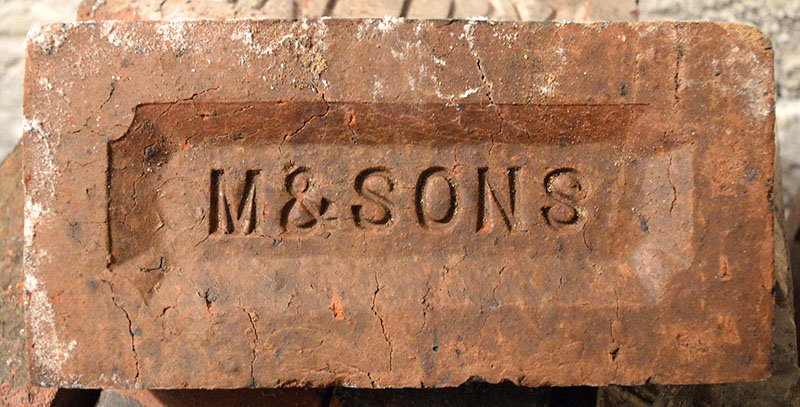
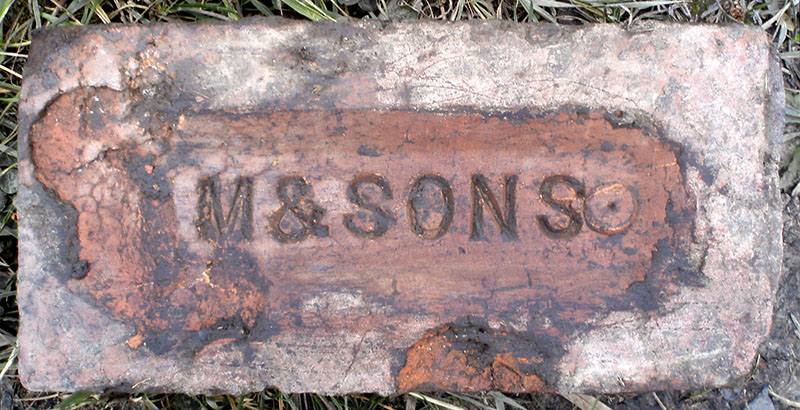
Photos by Frank Lawson.
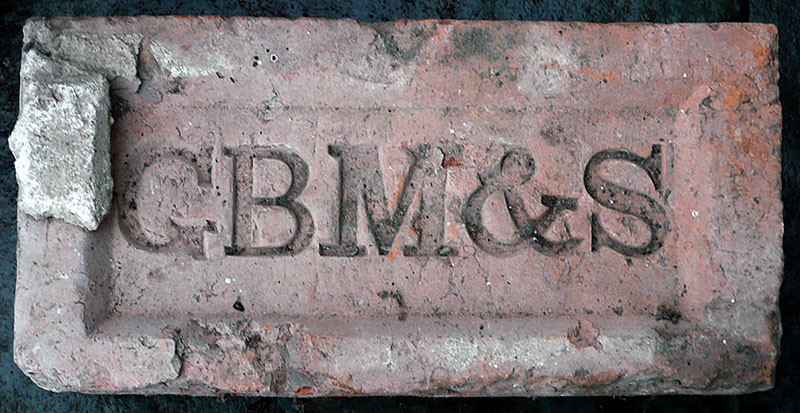
This boldly lettered brick was made by George Backhouse Marshall & Sons, Church Garforth, listed as masons, builders and brickmakers in White's Clothing District directory, 1875. Photo by Alan Tomlinson.
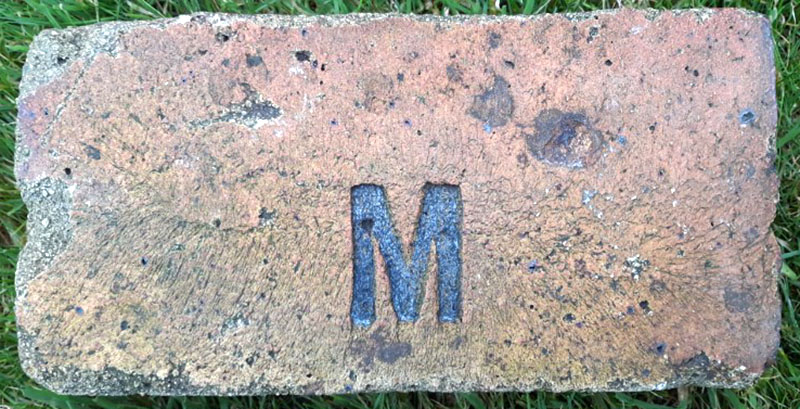
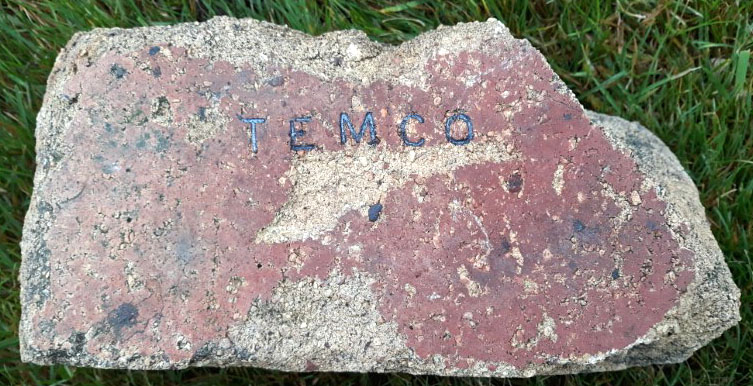
Photos by John Bramall.
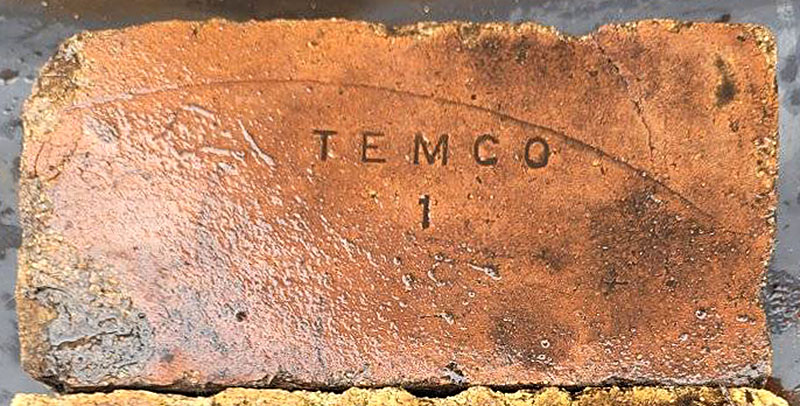
Photo by Sean Clavery.
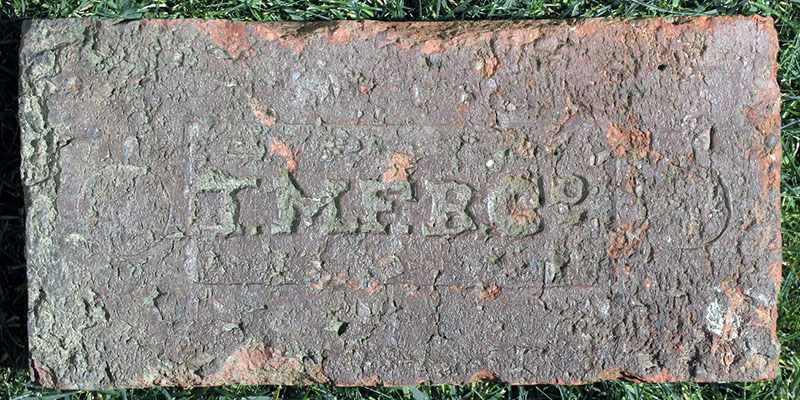
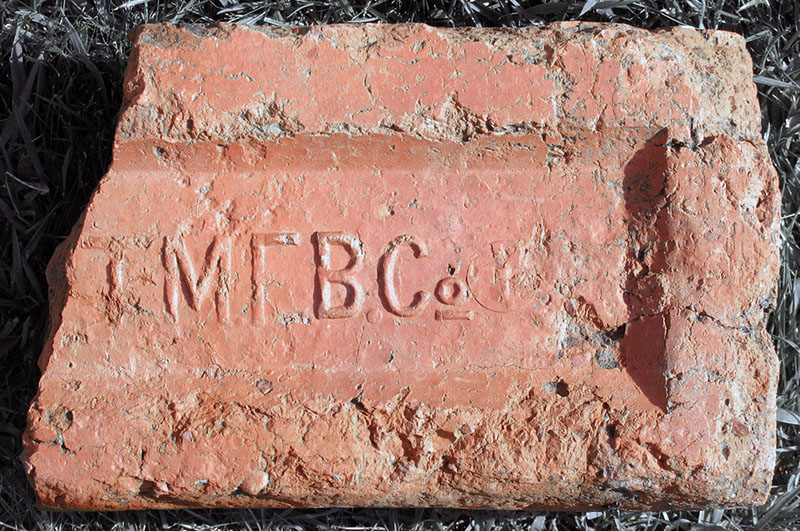
Thomas Marshall was first in partnership with William Crapper at the Storrs Bridge Brickworks, Loxley, Sheffield & the duo are listed as claiming compensation after the 1864 Great Sheffield Flood which devastated their brickworks. Whites 1879 edition is the only listing found for Marshall & Crapper at the Storrs Bridge Works. We then find that Marshall & Crapper had gone their separate ways by 1893 as Crapper is listed as operating the Wisewood Brickworks further down the Loxley valley in that year. Meanwhile Thomas Marshall continues to run the Storrs Bridge Works mainly producing fire bricks & products for the steel industry, hence the TMFB Co. bricks. White’s 1901 edition lists Thomas Marshall & Co. at Storrs Bridge. Thomas Marshall & Co. are listed as exhibiting their products at the 1937 British Industries Fair in Birmingham. After the death of Thomas Marshall (I am taking this to be the son or grandson of the 1864 Thomas Marshall) in 1965, the Storrs Bridge works was being operated by Hepworth Refractories. Photos & Info by Martyn Fretwell.
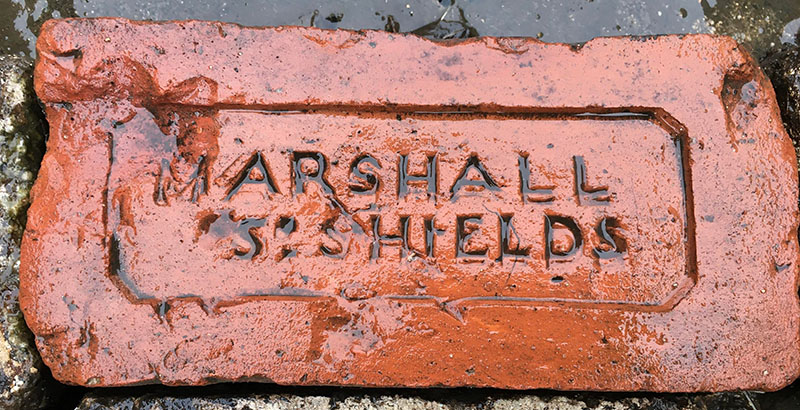
Adam & Peter Marshall, builders and brickmakers, Claypath Lane, South Shields, 1879 & 1881. 1881 employing 6 men, 4 boys and 3 women. 1889 Peter Marshall, Lee Street, South Shields. Photo by Steven Tait.
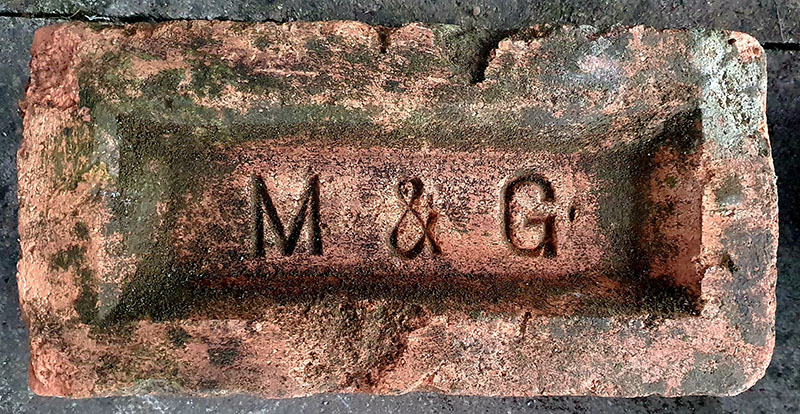
Photo by Kevin Moyles.
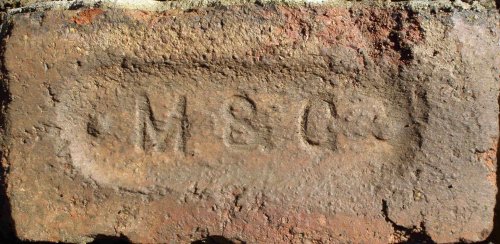
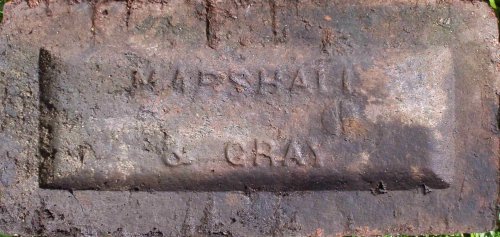
Marshall & Gray were once owners of Guiseley Brickworks.
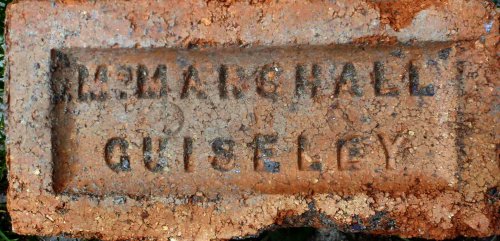
A later product of the works. Photos by courtesy of the Frank Lawson collection.
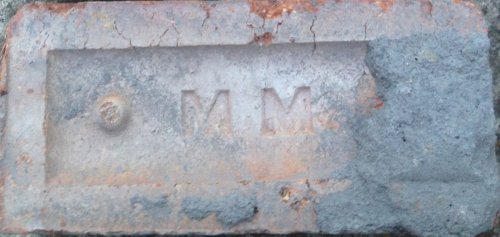
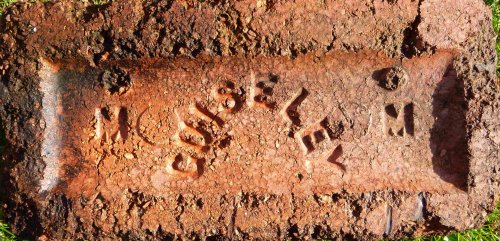
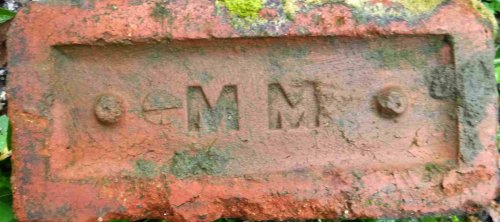
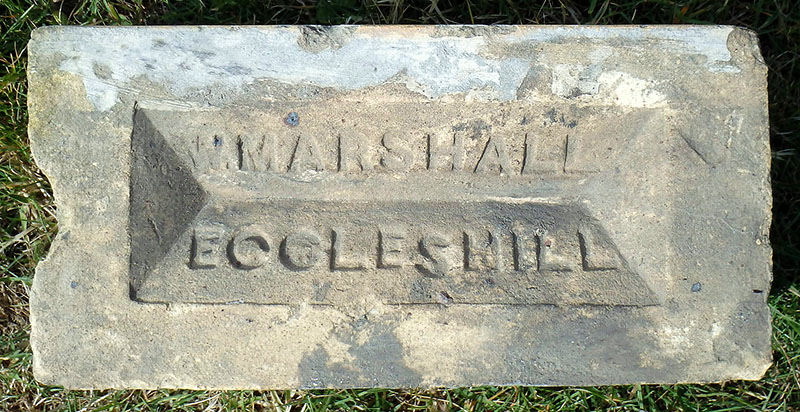
William Marshall, Stone Hall Road, Eccleshill, Bradford, West Yorks - Post Office Bradford Directory 1887. Photo by Frank Lawson.
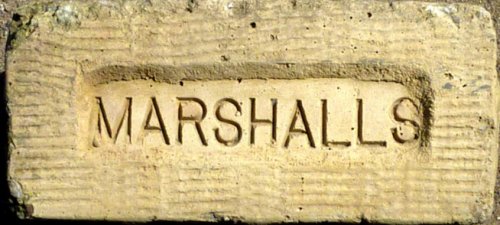
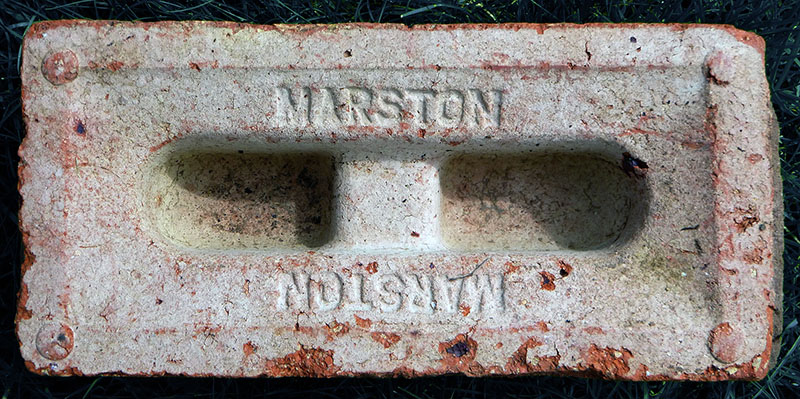
Marston Valley Brick Co, Lidlington, Bedfordshire.
The original Marston Valley Brick Company was formed in 1929 with Mr Whitehouse as the Managing Director. He had previously been the Manager of The London Brick Company in Peterborough. Marston Valley Brick Company and London Brick Company became rivals. In a bid to control the progress of Marston Valley Brick Company, London Brick brought large areas of land around Lidlington and other local villages. In 1968 London Brick Company took over Marston Valley Brick Company, this was completed in 1971 and Marston Valley Brick Company ceased to exist. At the height of the industry's production
there were 167 brick chimneys in the Marston Vale. Photo and info by Frank Lawson.
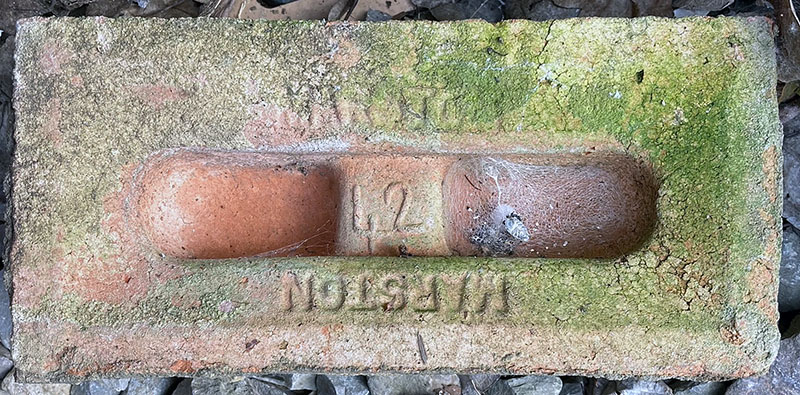
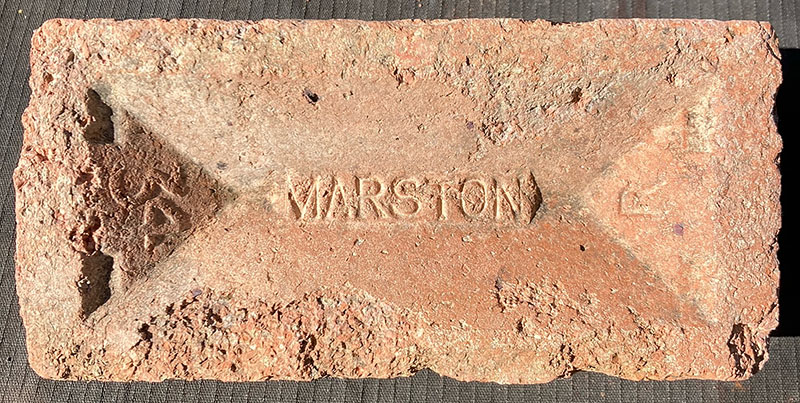
Photos by Steven Taylor.
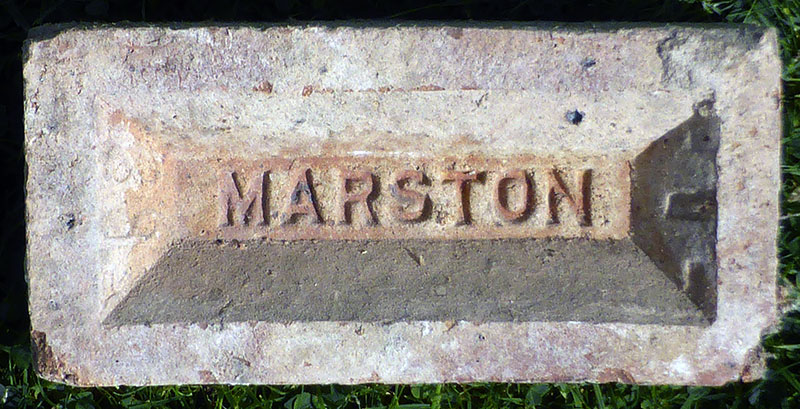
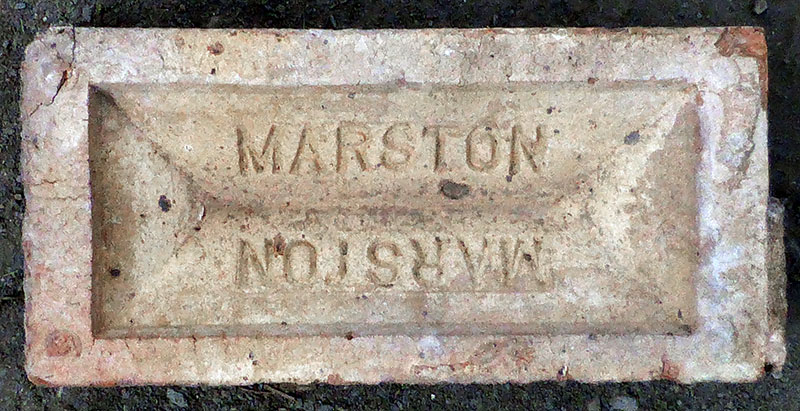
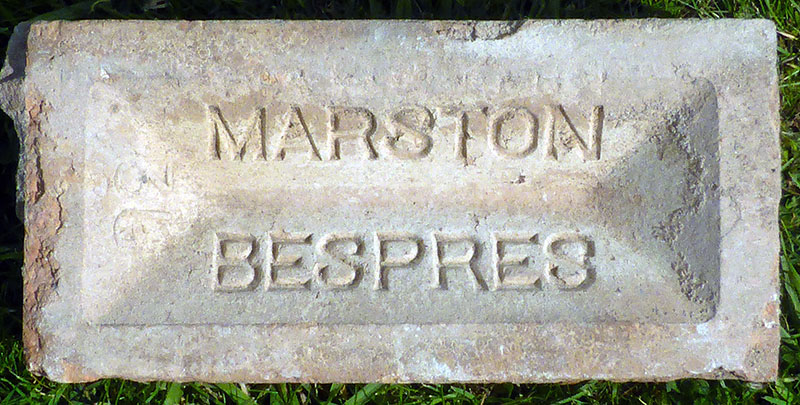
Photos by Martyn Fretwell.
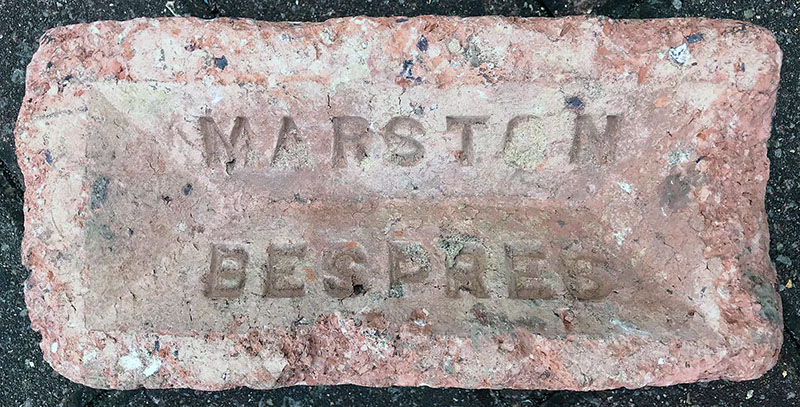
Photo by Trevor Stringer.
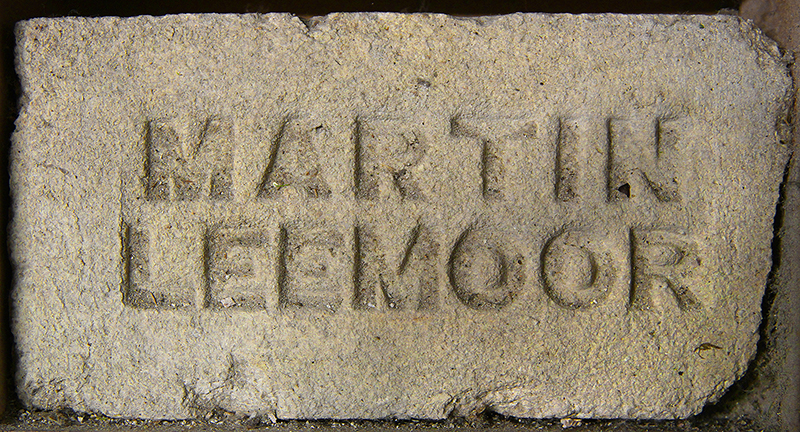
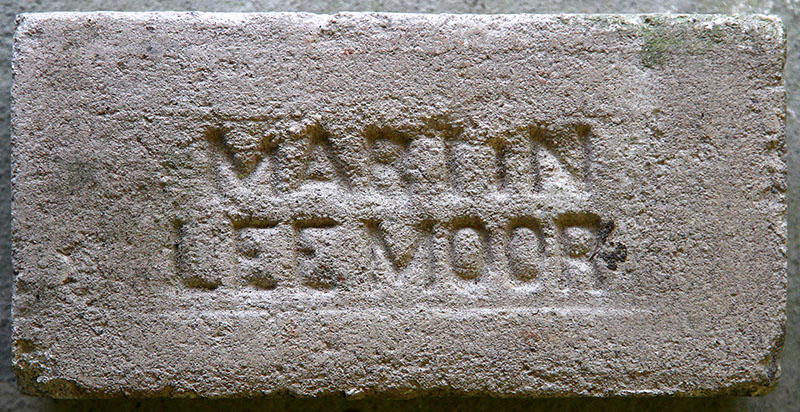
Photo by David Kitching, part of the collection at Wheal Martyn China Clay
Museum.
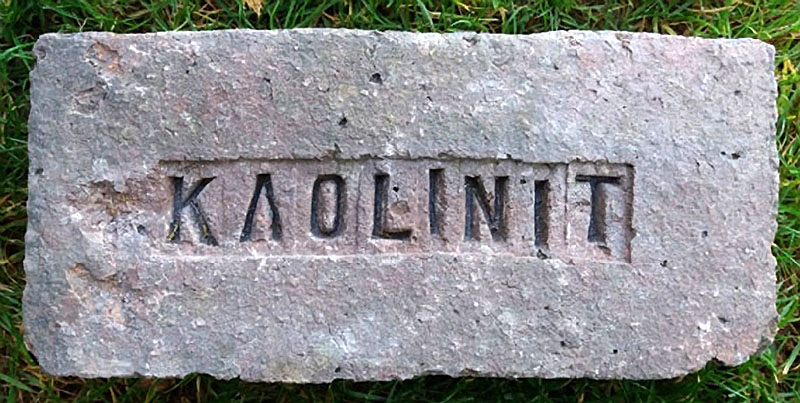
A product of Martin Bros, Lee Moor, Porcelain Clay-Bricks and Architectural Works. Photo by Mark Cranston.
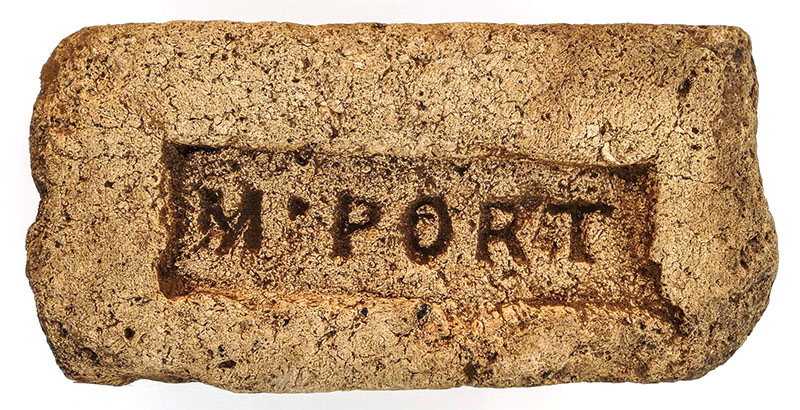
Photo by Chris Tilney.
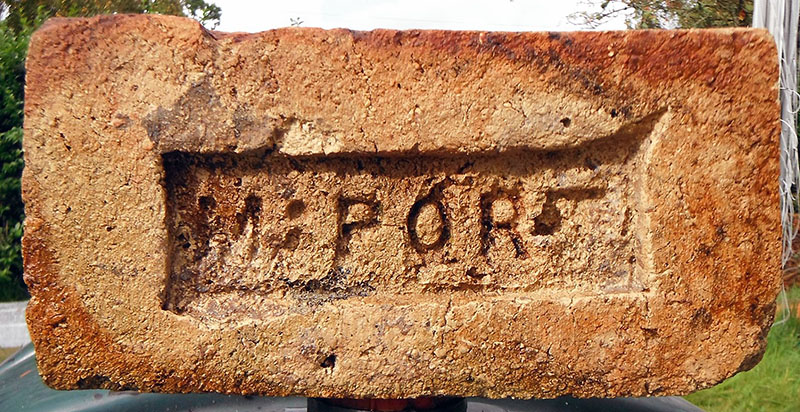
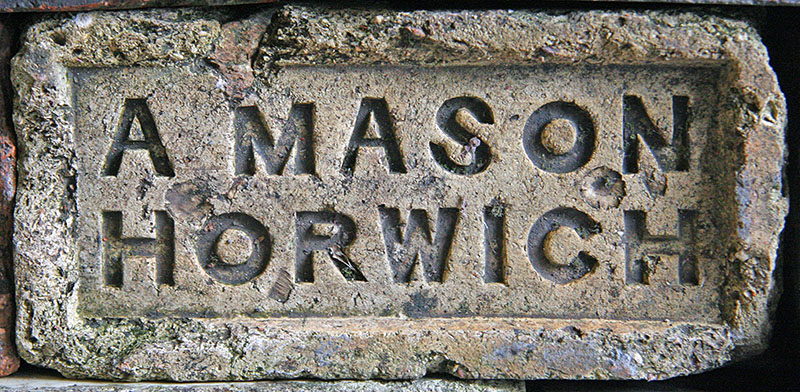
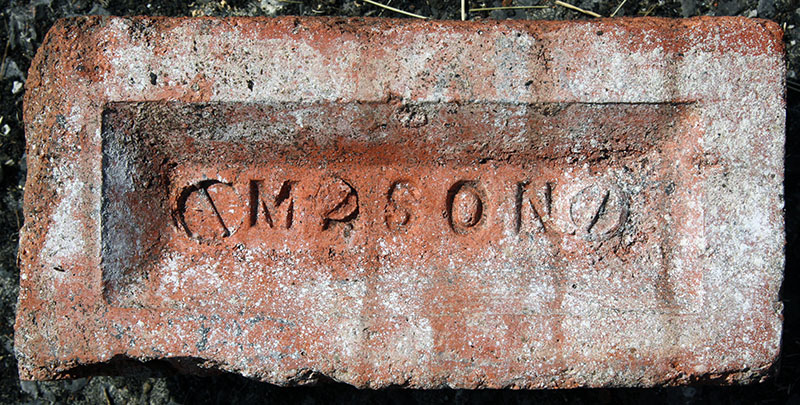
Adam Mason, Pearlbrook & Winter Hill Fireclay Works, Horwich, Lancs. Worrall's Horwich Directory 1871: - Mason Adam, coal proprietor, and manufacturer of fire clay and terra cotta wares, Winterhill and Pearlbrook works. Mason was proprietor of Montcliffe Colliery, Horwich, Bolton. Photos and information by David Kitching.

Photo by Alan Davies.
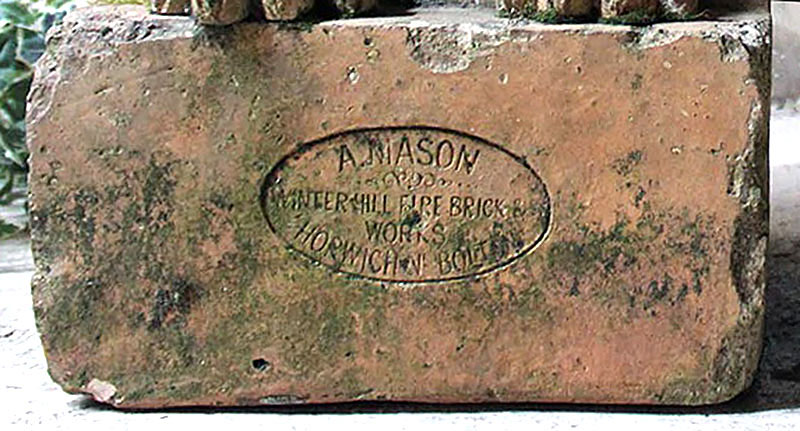
Photo by Bill Fielding.
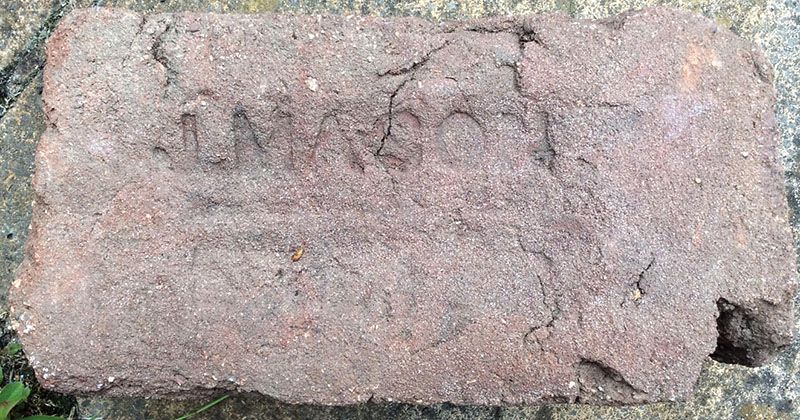
An advert in 1853 by Mr Mason's Brickmaker at the brick field indicates they
could supply bricks from the 25 April under his supervision. James Mason
would run the works until January 1859, when he resigned just before the
works went into private ownership. Information by David Cornforth and photo by Simon Fogg.
Richard Mason & Sons, Crown Brick Works, Toll End,
Tipton. Richard Mason & Sons are first recorded in
Kelly's 1884 edition, then the entry from the 1896 edition to the
1916 edition is Mason Ltd, (blue & red), Toll End, Tipton.
Present day Bayleys Pool on Toll End Road is where they dug the
clay from for the Crown Brickworks. Info by Martyn
Fretwell.
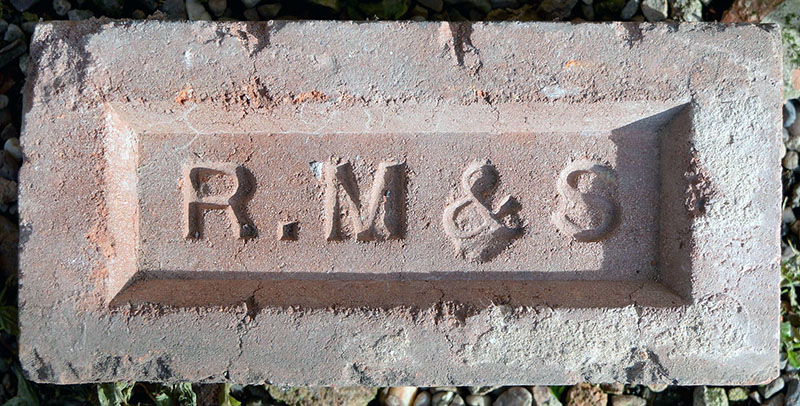
Photo courtesy of the the Chris Thorburn collection.
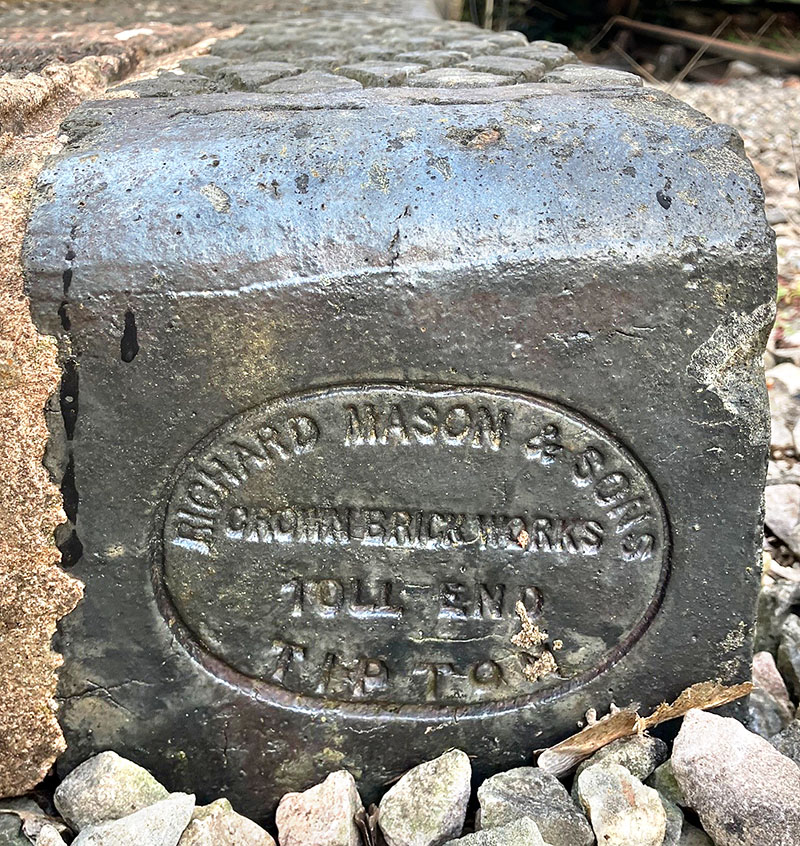
Photo by Elizabeth Thomson.
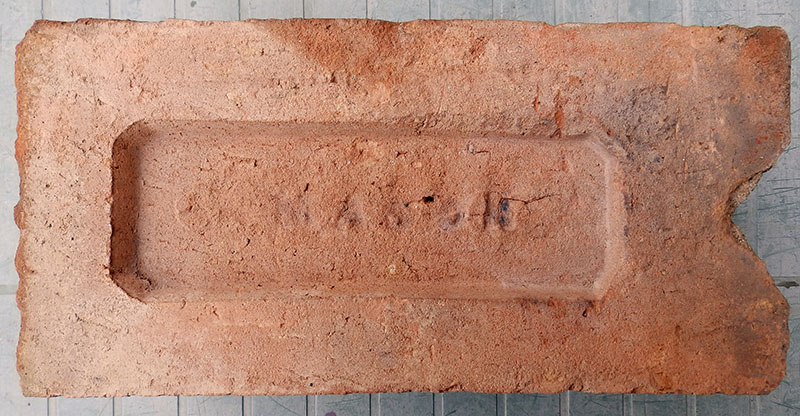
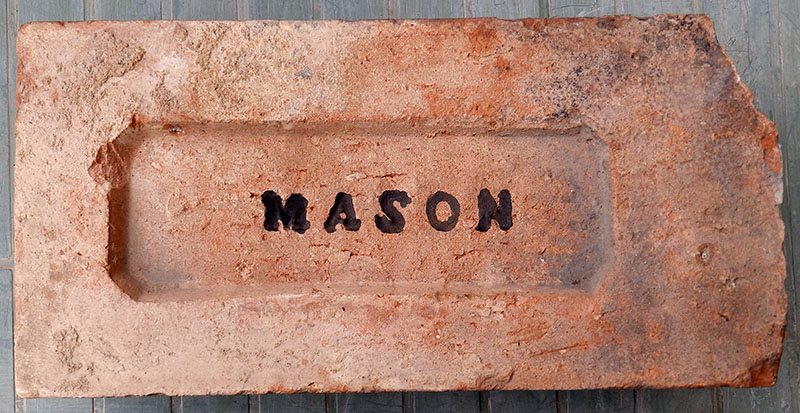
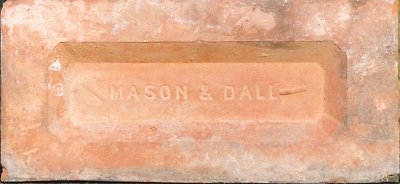
Mason and Dall were the first, brief, proprietors of a new brickworks in Kenilworth starting operations in January 1889. The only found examples of their named produce are decorative bricks such as this one. A railway siding was installed from the outset. The works became the Cherry Orchard as featured elsewhere on this site. Thanks to Robin Leach for the photo and info.
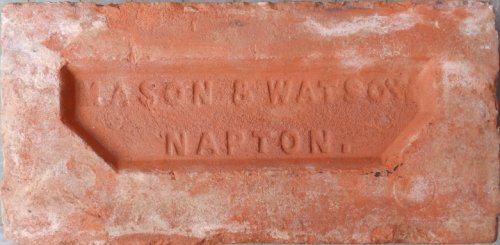
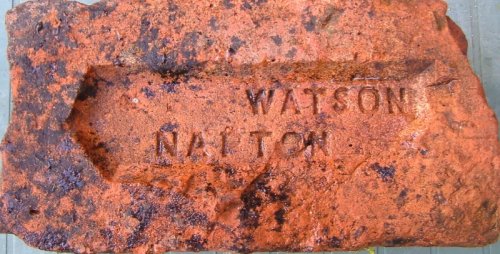
1878 Thomas Mason (brickmaker) and Charles Watson (carpenter & builder) established a brick & tile manufacturing site near the canal at Napton. They supplied bricks for the Sheffield, Manchester & Lincolnshire Railway ( later G.C.R.) in 1894 for contract No.4, that section being built by Thomas Oliver & Son. Earlier they supplied bricks to the L.N.W.R. Weedon - Marton Junction section 1888 onwards (opened 1895).
1896 (10th December) Partnership dissolved by mutual consent. Trading as Charles Watson Brick & Tile Makers until 31/12/1901.
1902 (1st January) Watson Nelson Ltd. Brick & Tile Manufacturers (Windmill Brand - T.M.) with Watson as managing director. The Nelson connection was Charles Nelson & Co. Ltd. cement manufacturers of Stockton. Sold to Allied Brick & Tile Works Ltd., head office 13, Stratford Place, London W1 in 1934. Work continued at Napton until the 1970's, when they closed in 1973.
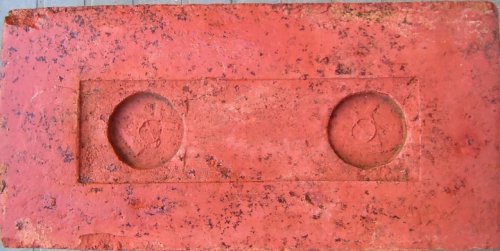
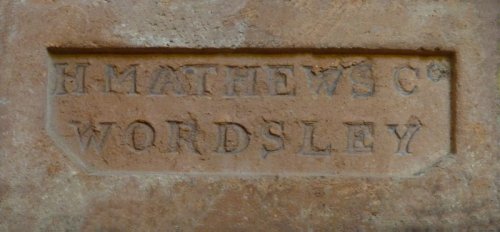

Henry Matravers is listed by Davison at Longlands, Middlesbrough in 1877. This brick was found in the Tees and is most likely to be his product. Photo by Mike Graham.
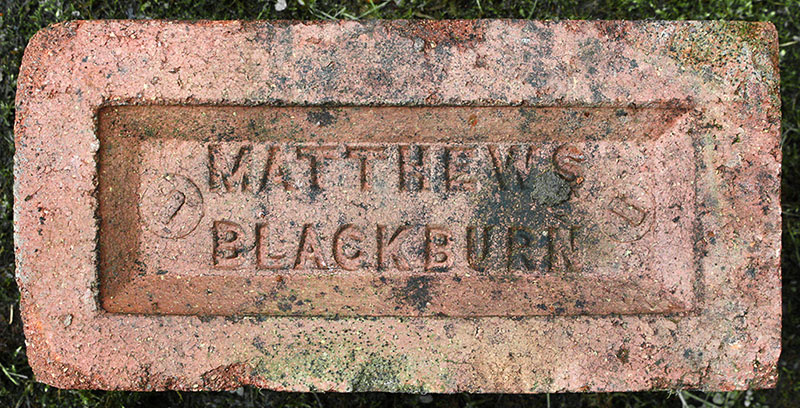
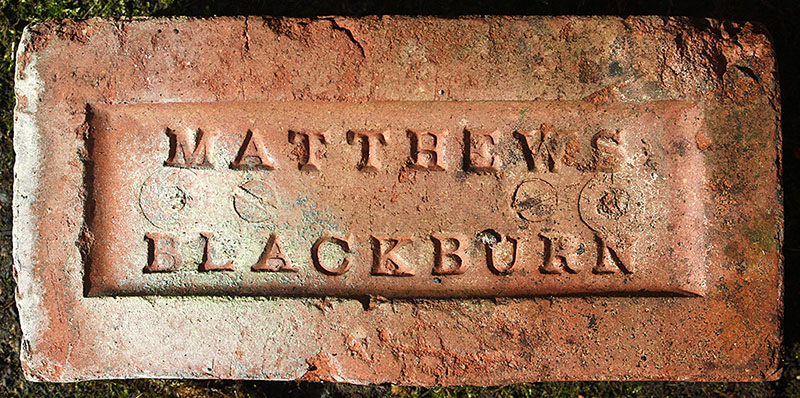
William Matthews, Royshaw Brickworks, Blackburn. Started in 1887. The
works was rebuilt in 1932 by the Royshaw Brickworks Co. and later
taken over by John Woods Brick & Tile Co. Ltd. of Bog Height
Darwen. It closed in the early 1950's. Info by Colin
Driver, photos by David Kitching.
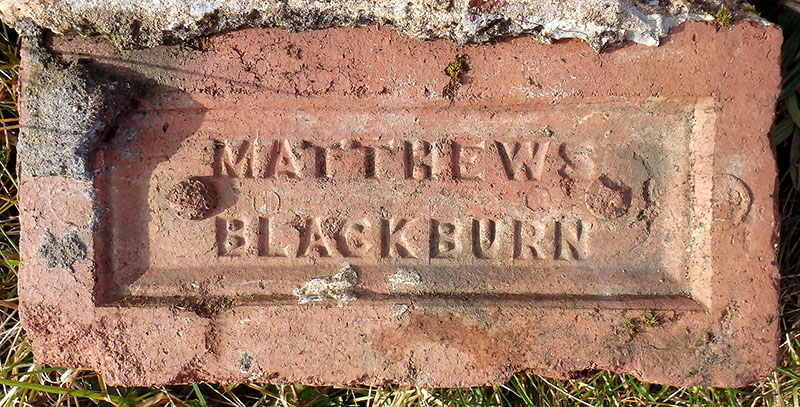
Photo by Frank Lawson.
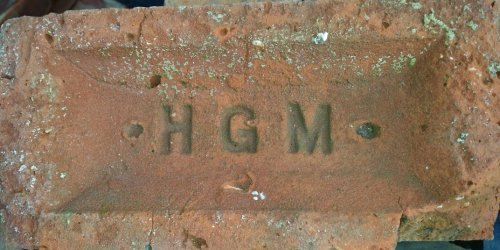
Founded in 1923 by Henry George Matthews, his descendants
still make hand-made & machine-made bricks in
Buckinghamshire today. A family run business, the clay is
still dug from original deposits around Bellingdon &
Chalfont St. Giles. Photographed at a reclamation yard on the
outskirts of Aylesbury. Photo and info by Nigel Furniss.
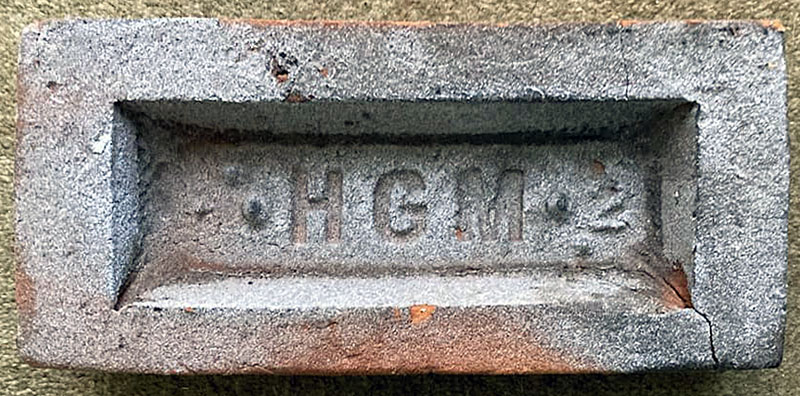
Photo by Michael Chapman.
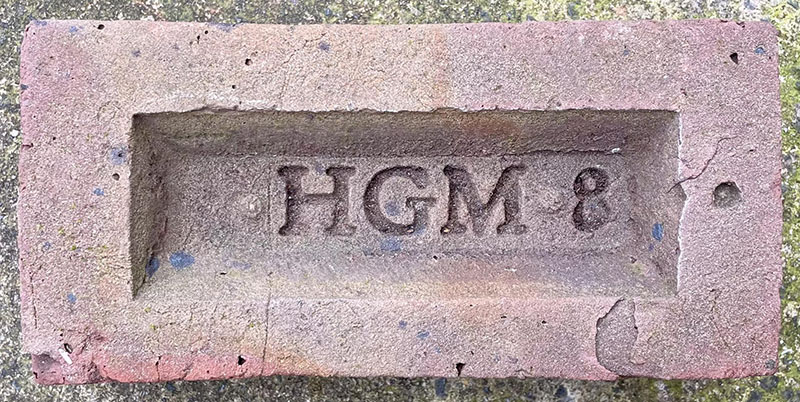
Photo by Phil Burgoyne.
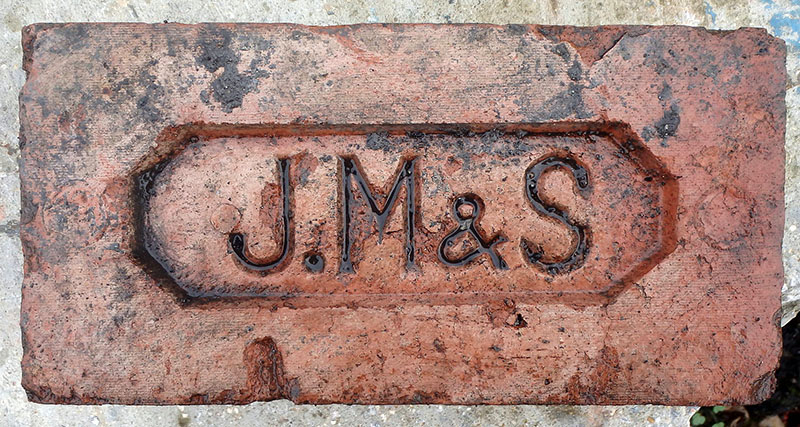
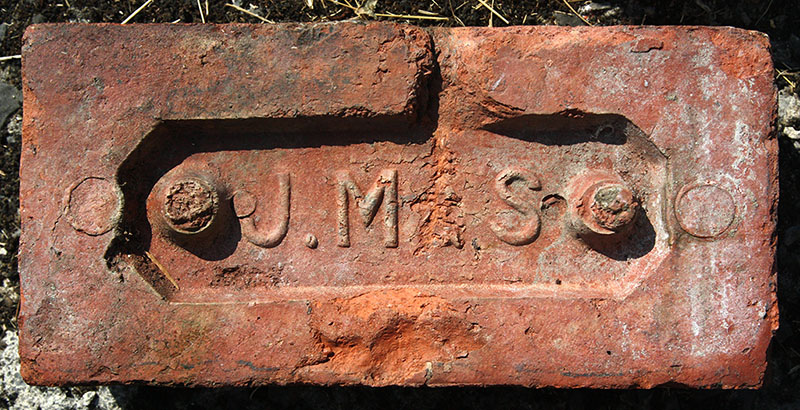
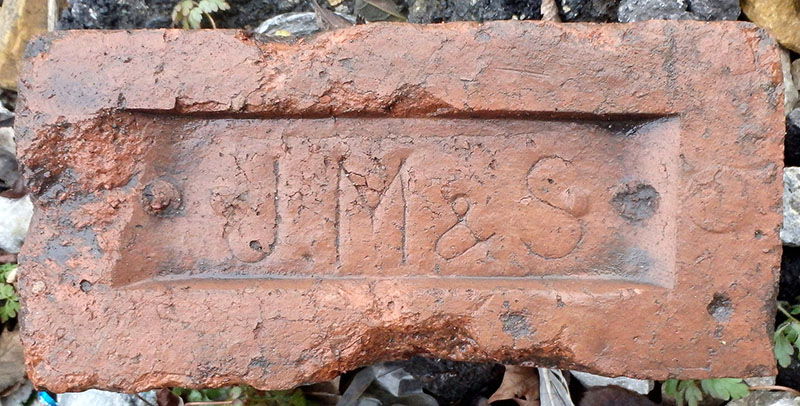
John Matthew & Son , Ingram Road / Shafton Lane, Holbeck, Leeds. Listed in Kelly 1900 to 1916, after which the site appears to have been owned by A N Braithwaite & Co ( A N B & Co ). Photos by Frank Lawson.
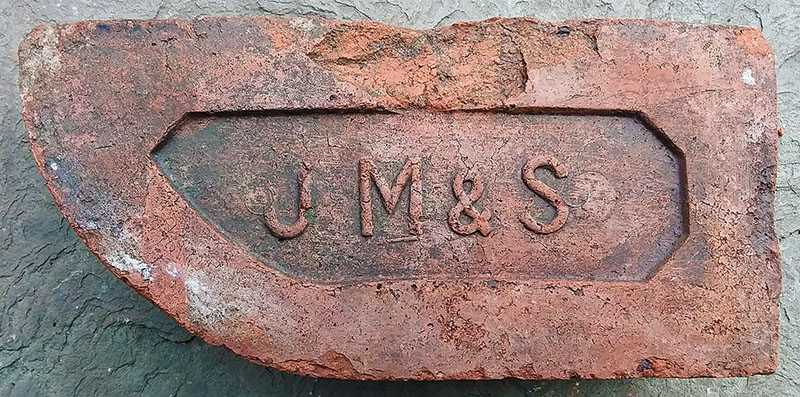
Photo by David Fox.
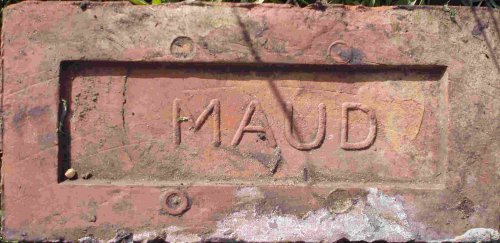
George Maud of Thorne, Yorkshire is listed as a farmer & brickmaker in Kelly's West Riding Directory of 1881. Photo and info by Frank Lawson.
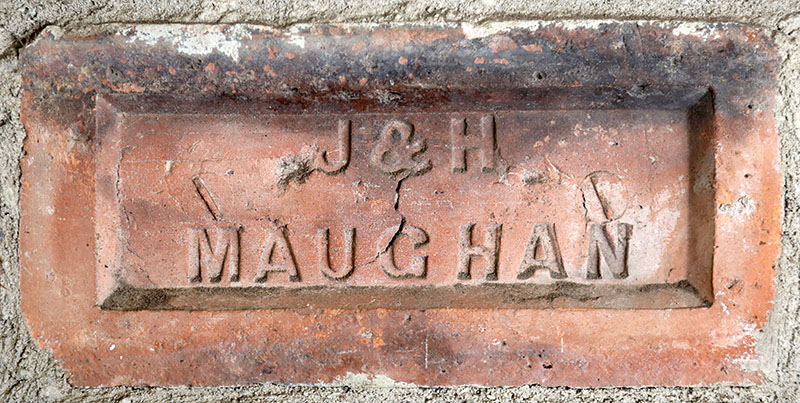
John & Henry Maughan. The Maughan brick and tile works at Blyth was offered for sale in 1899 after the bankruptcy of John Vaughan, builder and brick manufacturer. By November 1899 the works was run by the Blyth Brick Company. Photo by David Kitching.
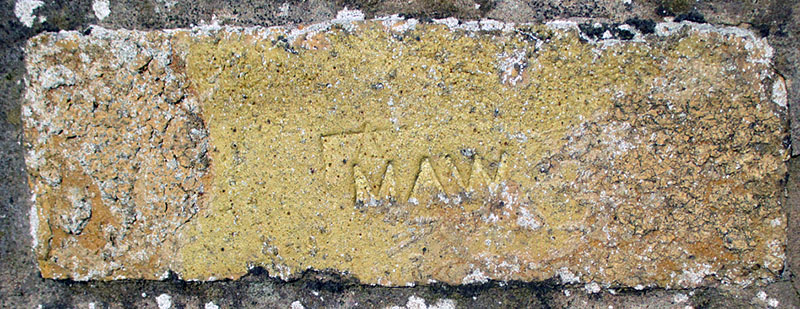
Maw Limited were primarily tile producers in Benthall & Jackfield, Shropshire. It is known that Maw made bricks from time to time, but it's not known where this brick was made. Photo & Info by Mike Shaw.
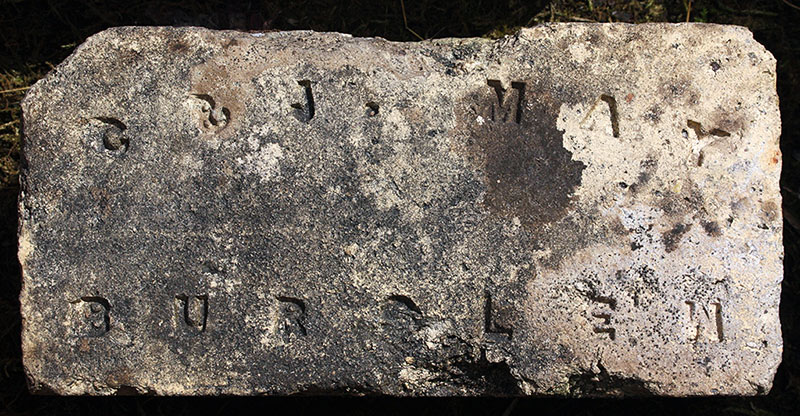
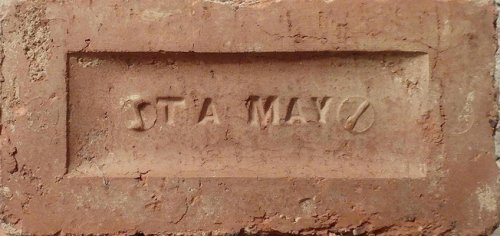
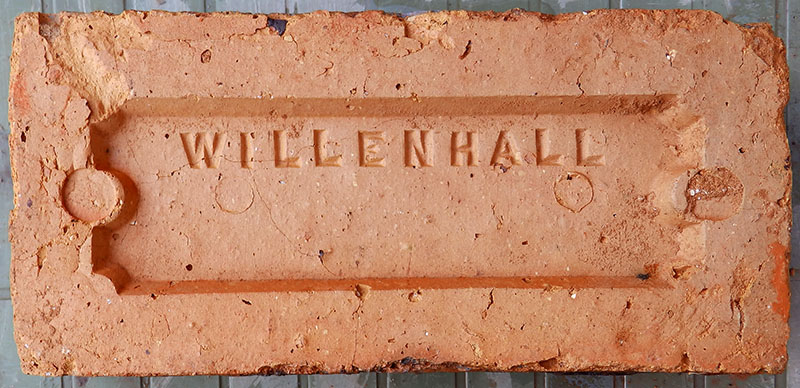
A search of trade directories reveals Thomas & Henry Mayo, Willenhall, Coventry, owned this works in Kelly's 1880 to 88, then Henry Mayo 1892. The 1881 census shows Thomas Mayo - Builder. employing 25 men & 5 boys. (Father), and (Son) Henry - Builder & Brickmaker employing 5 men. From 1900 Stanley Brothers operated this works and made only red tiles. Info by Martyn Fretwell, Photo by Nigel Furniss.
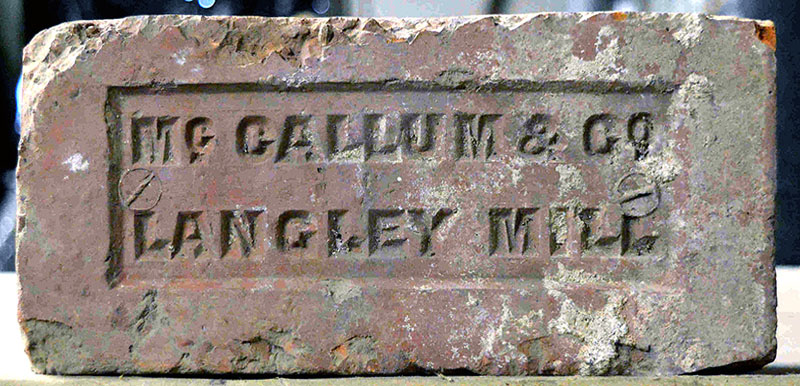
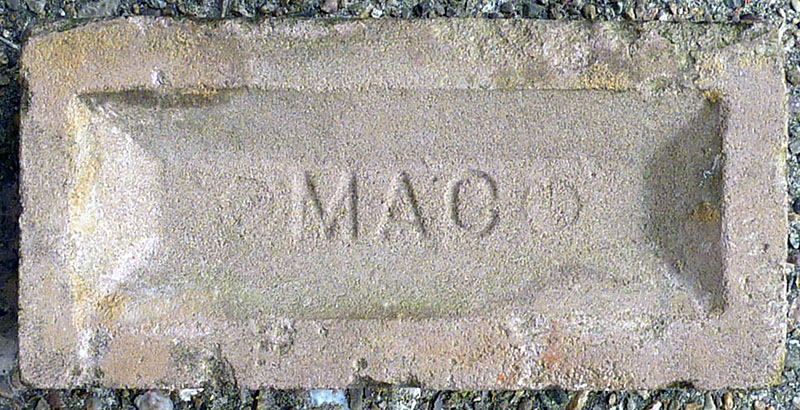
McCarthy's brickworks was at the end of Thames Street in Bulwell, on the opposite side of the then Midland Railway line to Sankey's Brickworks, but now the path of the railway line is Sellers Wood Drive. These internal bricks were stamped either McCarthy's or MAC and were very absorbent. A bricklayer friend has told me, that he had to soak them overnight, before he layed them the next day. If not the bricks would draw the moisture out of the mortar and the wall would fall down. A picture of the works which closed around 1977 can be seen on picturethepast.org.uk Photo & Info by Martyn Fretwell.
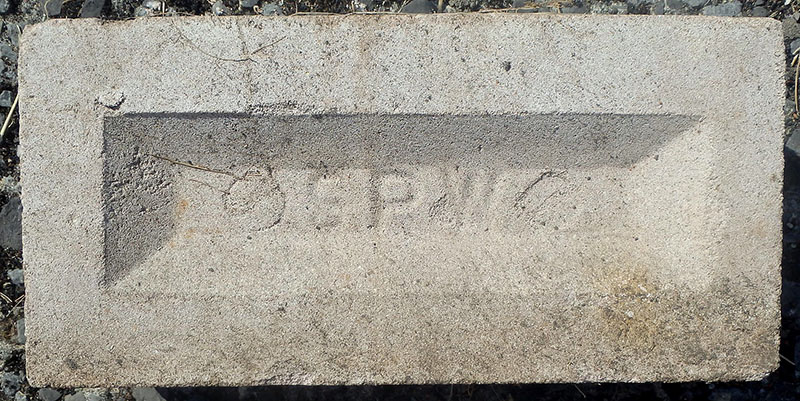
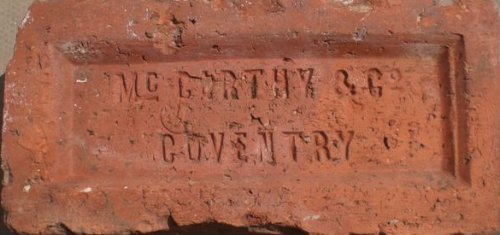
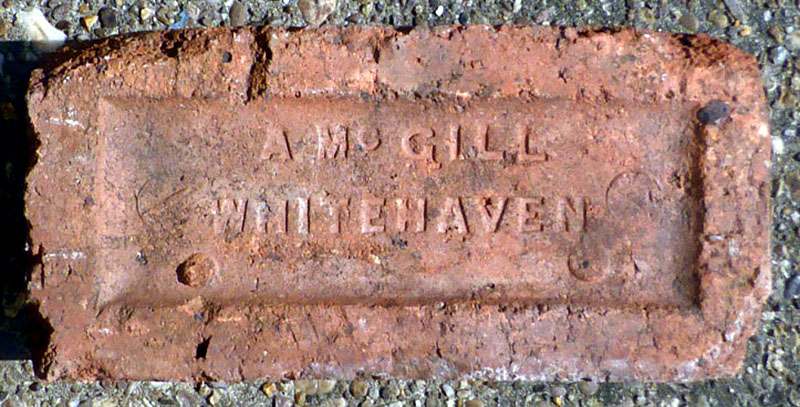
Photo by Martyn Fretwell from the Chris Thornburn Collection.
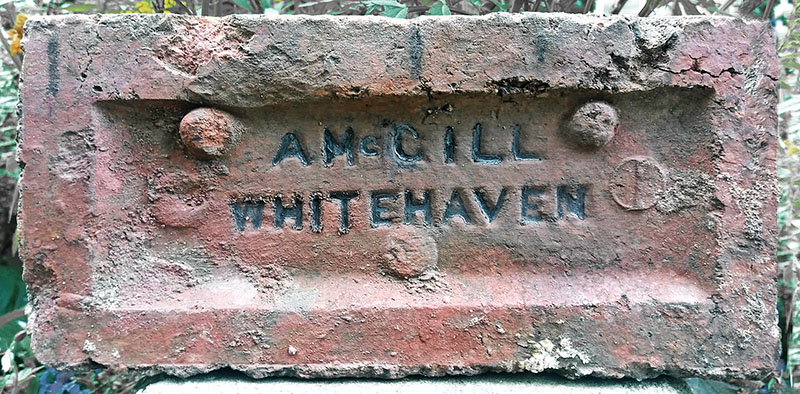
Photo by Chris Graham.
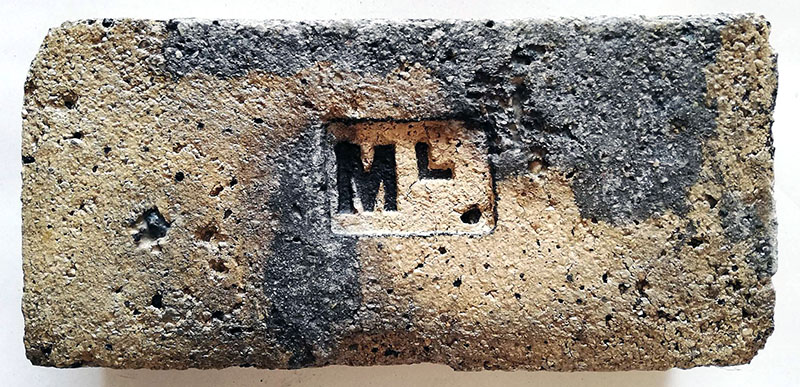
McLachlan & Co were proprietors of the Cold Knot firebrick works at Crook from the 1880s until it closed in 1897. Photo by Chris Tilney.
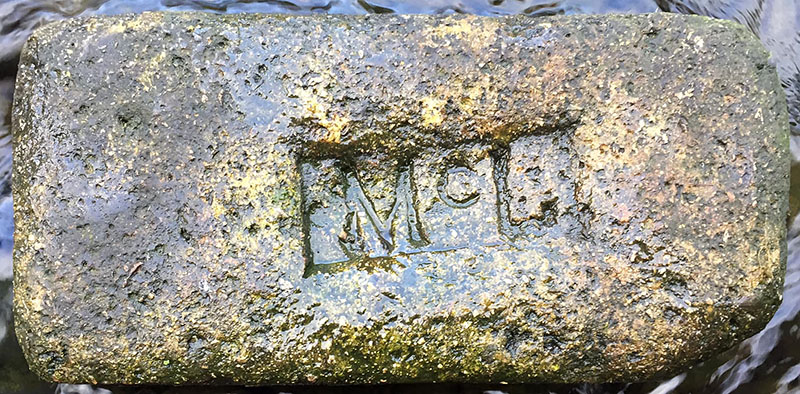
Photo by Steven Tait.
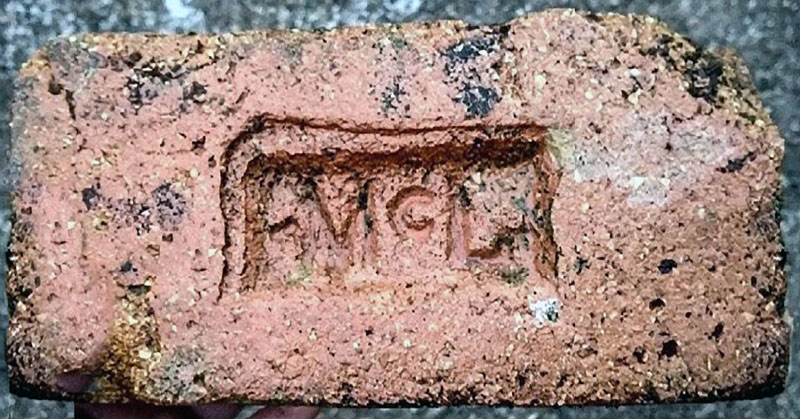
John McLaren, Shotton, County Durham whose business went into bankruptcy in 1869. Info by Mark Cranston, photo by Chris Tilney.
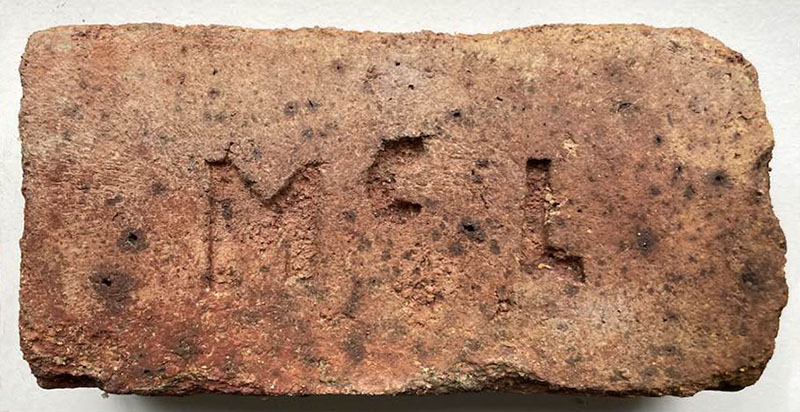
Photo by Nigel Bryson.
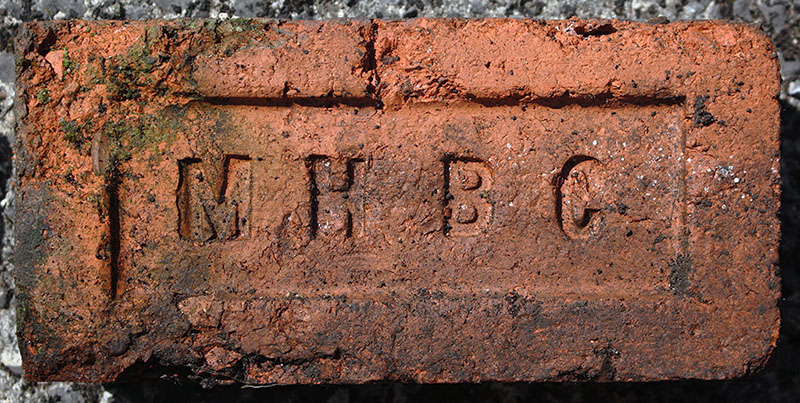
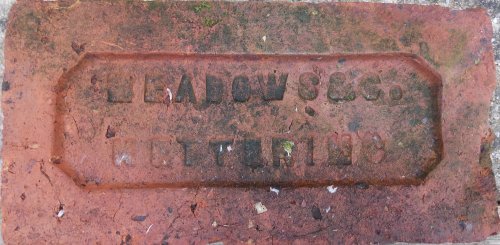
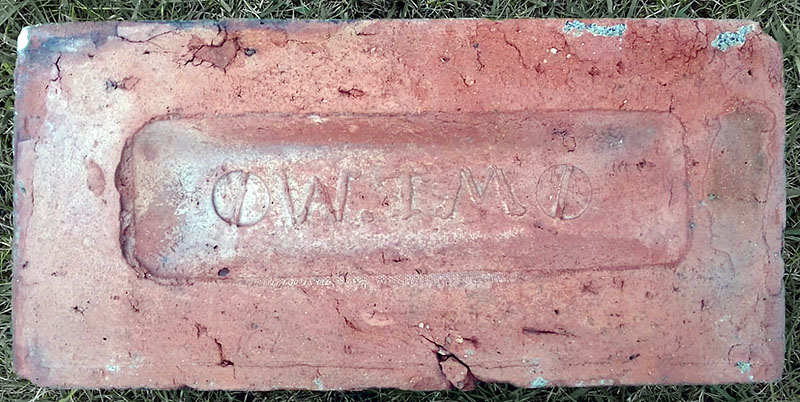
This business is usually listed as T & W Meadows in the trade directories from the 1870s at Georges Road, Heaton Norris, Stockport. In 1881 Thomas Meadows is listed as a timber merchant and contractor employing 200 men. The timber yard and sawmill was on Georges Road but the brickworks seems to have been on Garners Lane in Davenport. By 1902 it was trading as the Davenport Terra Cotta, Brick & Tile Co still under Meadows' ownership. The works disappeared some time after 1910 and before 1914. Photo by Steve Biddulph.
See also Davenport.
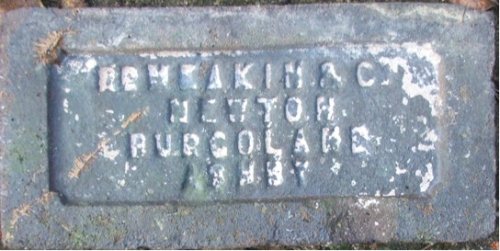
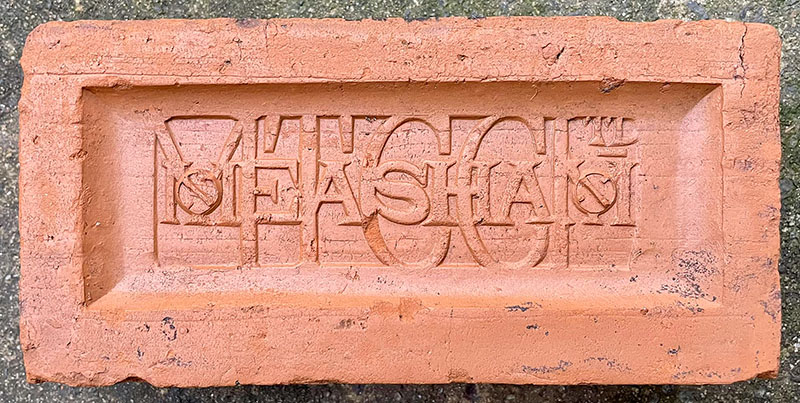
Photo by Phil Burgoyne.
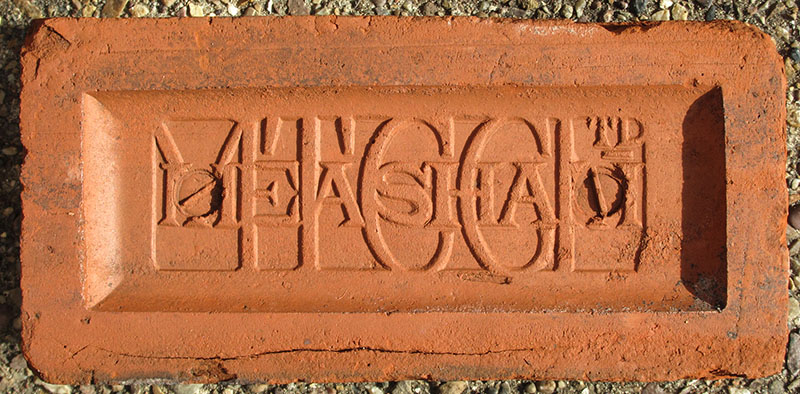
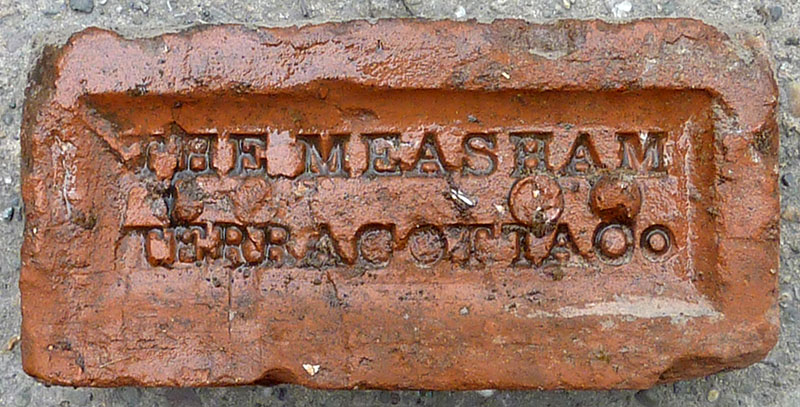
The Measham brick and Terra Cotta works was just off Atherstone
Road, starting around 1883. The works are recorded in Kelly's for
1895 and in 1899 the company sank the Measham Newfield pit to
extract coal & clay, its manager was John Tomlin. A railway
siding was also built to the pit. On either side of the main
railway line, there were two other brickworks - Coronet &
Redbank on Atherstone Road, each with its own clay pits. The
Measham Brick & Terra Cotta works closed in 1925 & was
demolished. Photos and Info by Martyn Fretwell
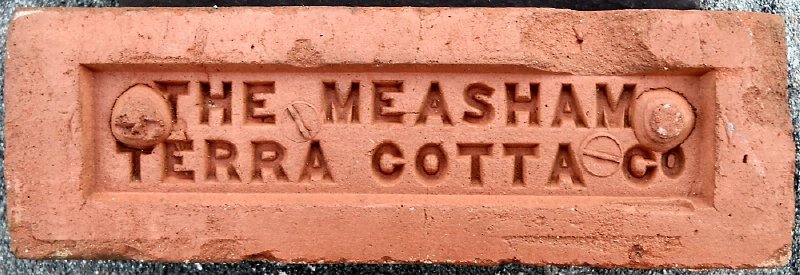
Photo by Ray Martin.
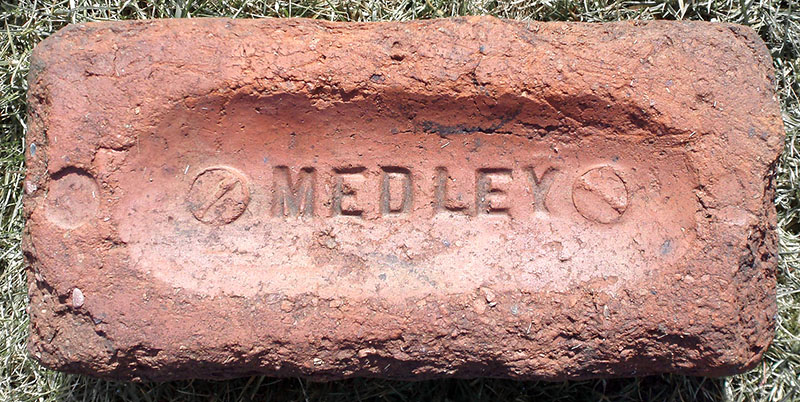
Found near Huddersfield in W. Yorks by Frank Lawson. Made by
Jesse Medley at Brownroyd Brickworks, Kilner Bank, Moldgreen,
Huddersfield, and listed in trade directories between 1889 and
1939. Thanks to Phillip Rothery for the history.
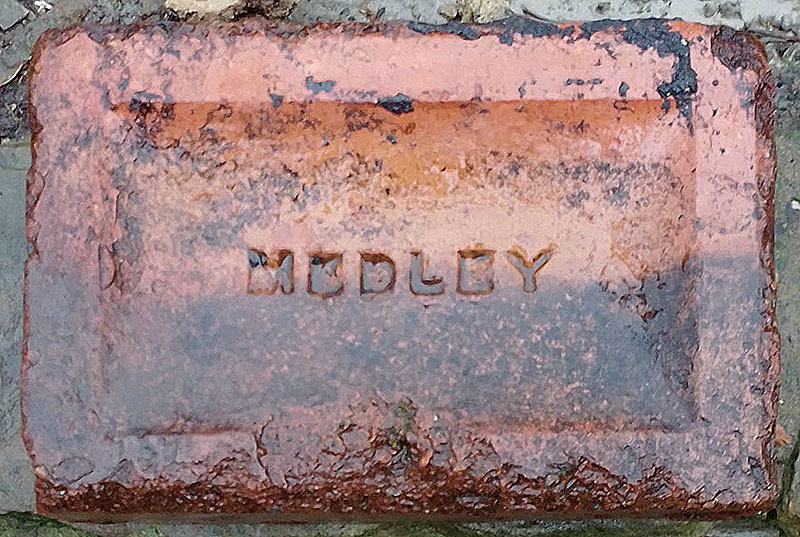
Photo by Martin Fretwell.
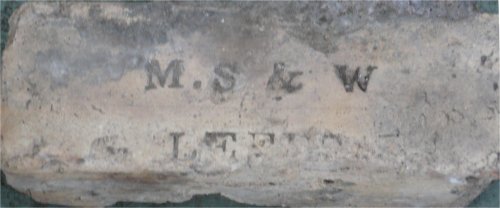
This was recovered from the Ferrybridge Pottery in Yorkshire, which closed down in 2003 and was demolished later that year. It came from the early (1795) group of buildings. Photo and info by Alan Tomlinson. Philip Rothery writes that it is a product of Meek, Spence & Wilson. Listed in Slater's Yorkshire/Leeds 1848 and in White's Clothing District/ Leeds 1861.
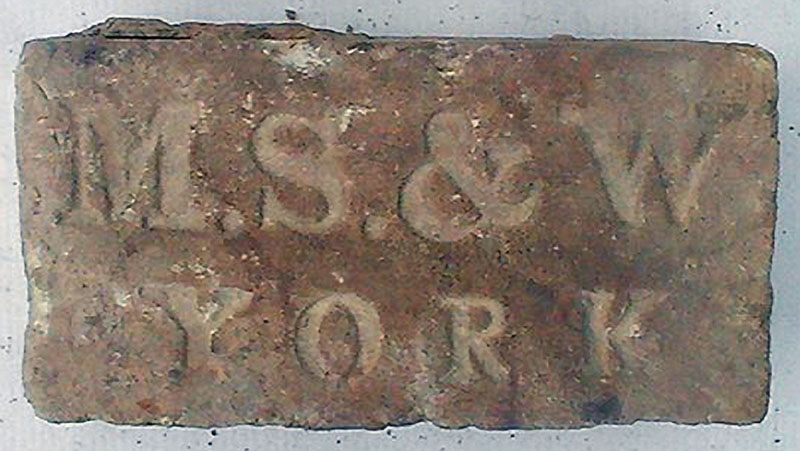
Found in the Kirkstall area, Leeds. In the Victoria Country History for York there is a reference to James Meek of the York Flint Glass company making firebricks. He had 11 men making bricks in 1851. Photo and info by Sandra Garside-Neville.
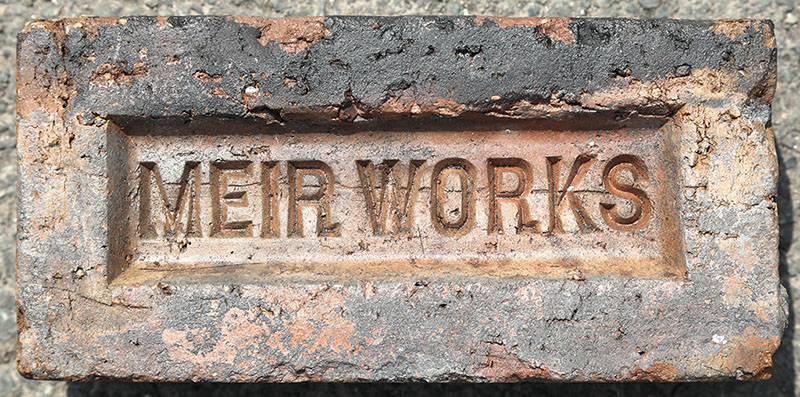
Photo taken at Apedale Heritage Centre by David Kitching.
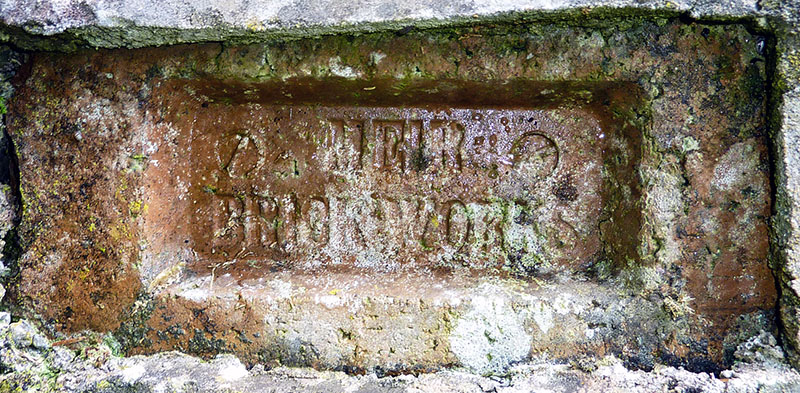
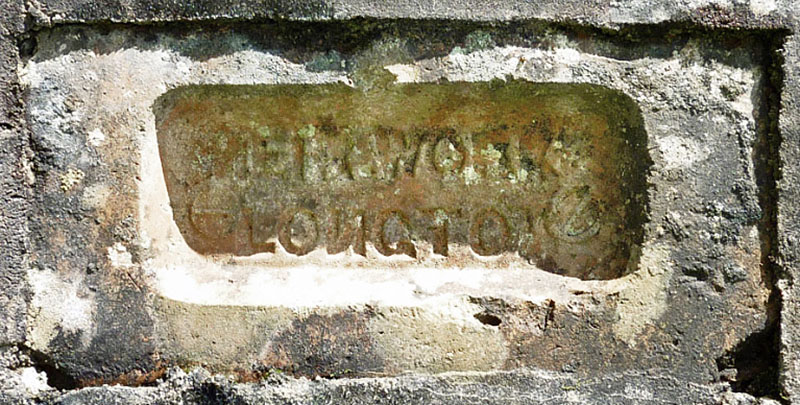
Photographs at Corris by Martyn Fretwell.
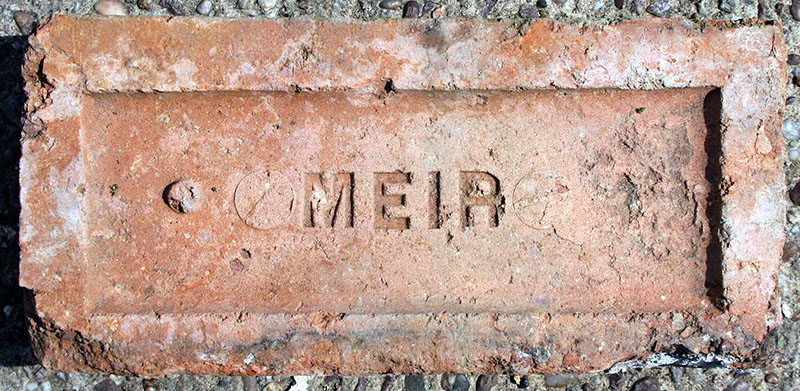
John Meir & Son are listed as brick manufacturers at Greengates, Tunstall in a trade directory for 1869-70.

Possibly have been made by Richard Bennett of Kings Newton, Melbourne or John Evans, Melbourne. Photographed in Derbyshire by Martyn Fretwell.
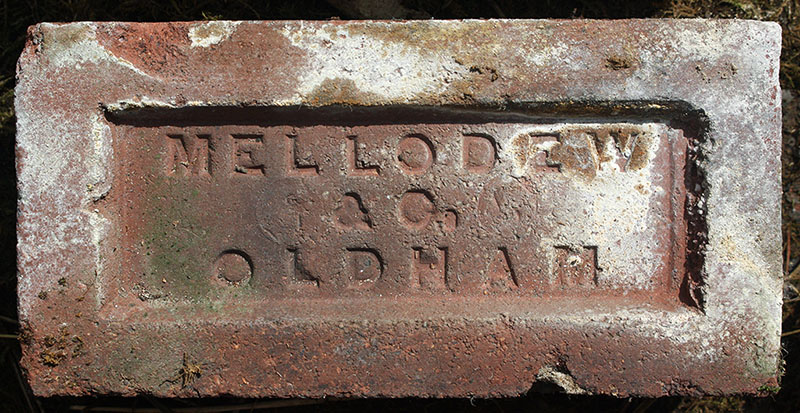
Thomas Mellodew & Co, Besom Hill Brick & Tile Works, Moorside, Oldham. The business appears in the trade directories as Mellodew & Clegg in 1879 and 1880, in 1889 and 1895 as Thomas Mellodew & Co. Photo by David Kitching.
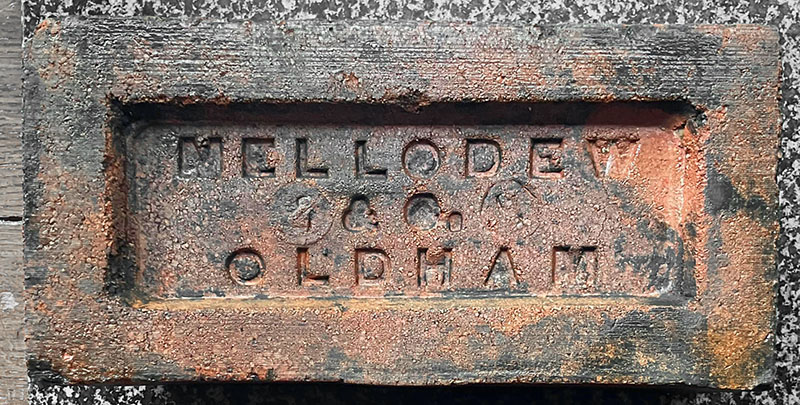
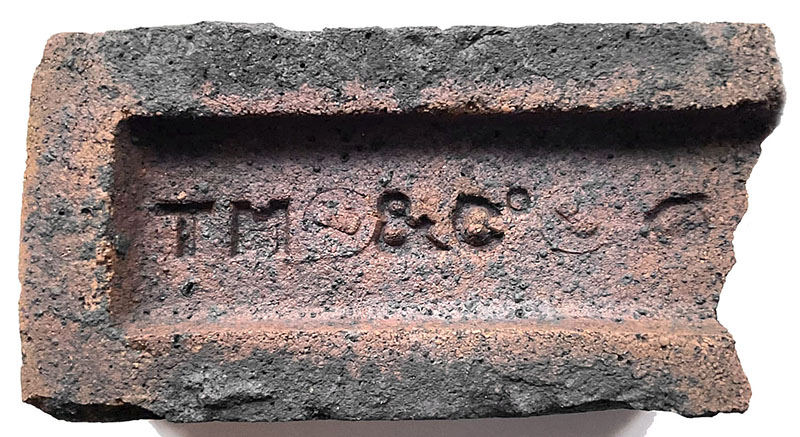
Photos by Ian Sneyd.

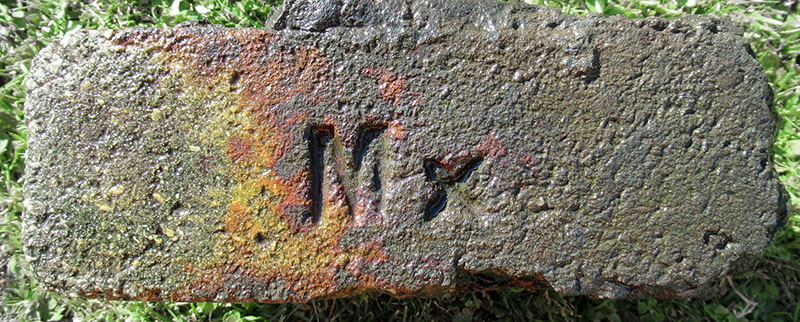
Two bricks likely to be made by the Meltham Silica (Fire) Brick Company, Meltham, West Yorkshire. The company was started by Mr Gardner & Mr Charlesworth on Mean Lane, Meltham in 1900. Local deposits of fireclay & ganister were used to make silica bricks for the coal gas, iron & steel and glassmaking industries. It expanded rapidly and was taken over by General Refractories (GR) in 1934, with some silica rocks being brought in from Wales. The company was renamed GR Stein, perhaps in 1967 and the works closed in 1985. Photos and info by Ian Suddaby. Ian suggests that the one marked MSBCo (Meltham Silica Brick Co) was made before the GR takeover in 1934 and the Mx one is a GR or GR Stein product.
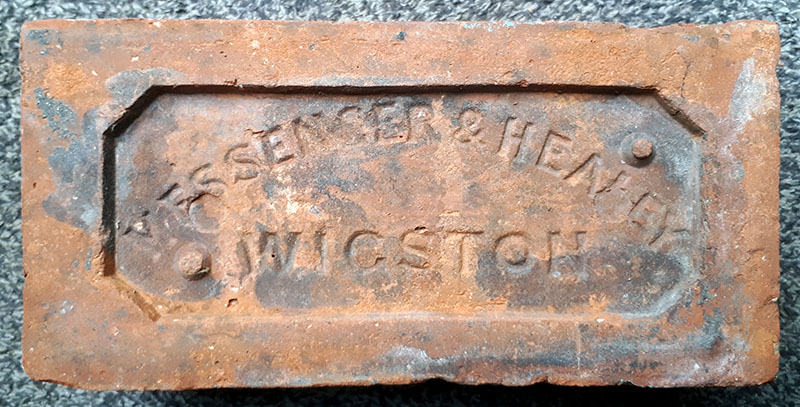
Messenger and Healey had a brick yard near to Wigston railway junction in Leicestershire. Messenger is listed alone in a trade directory for 1877. In about 1880 he is joined by Ebenezer Healey who previously had a brick works on the Saffron Lane nearer to Leicester. By 1888 the Wigston Junction Works was owned by Orson Wright which means that this brick dates from 1880-88. Photo and info by Dennis Gamble
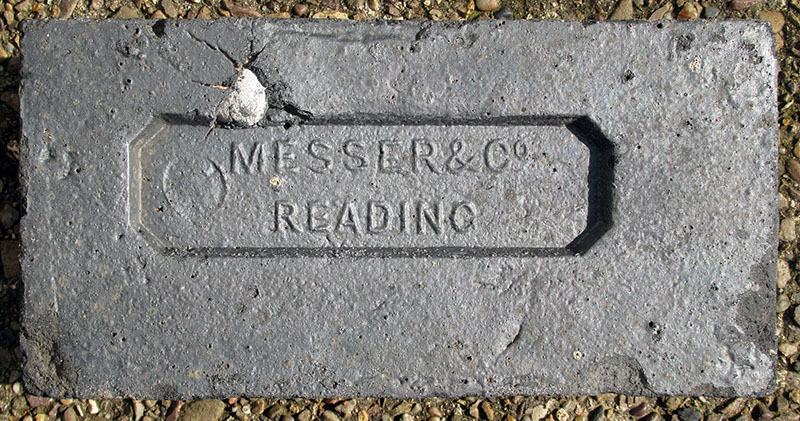
John Messer established his timber merchant business in Reading in around 1863. Many newspaper adverts reveal he also sold cement, tiles, pipes, sanitary ware & slates, but in his June 1883 advert he advertised paving bricks, which this is an example of. I am assuming he had these paving bricks made for him in the West Midlands. John Messer died in 1900 & his business was then run by his sons who advertised bricks for sale in 1901 & 1907. Photo & info by Martyn Fretwell.

"Metal" and "Metal Brand" was the trade brand used by The Metallic Tile Co. (Rowley Bros.) Ltd. They operated the Metallic Tileries in Chesterton, Newcastle-under-Lyme, Staffs. Trading ceased in 1977. This is believed to be is a late example of their pressed bricks. Bricks marked Metal" were also produced at Rowley Brothers Hanford Tileries which operated from 1936 to 1954.
Thanks to Darren Haywood for information and Frank Lawson for the photo.
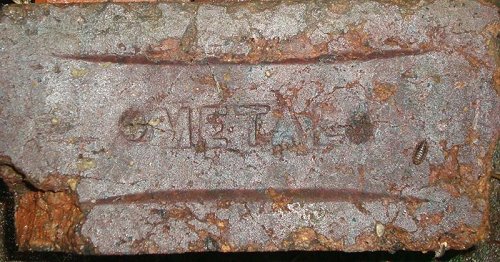
Found in Lincolnshire by Simon Patterson.
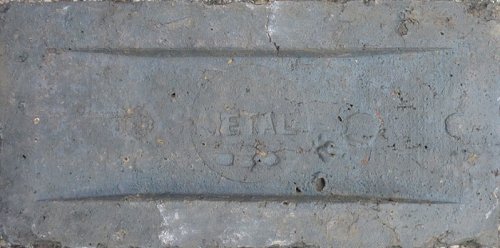
Found in Hucknall by Martyn Fretwell.
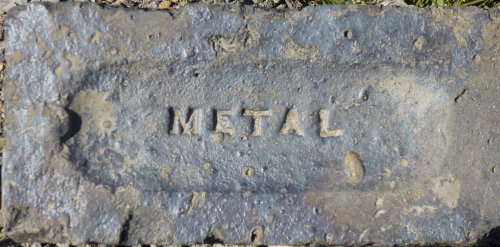
Photo by Nigel Megson, spotted in Earlsheaton, Dewsbury.
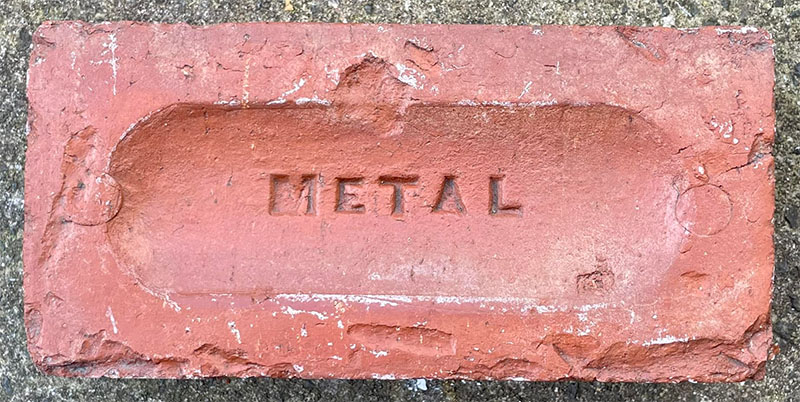
Photo by Phil Burgoyne.
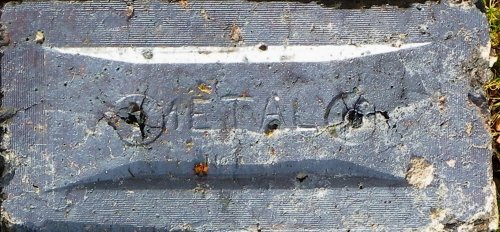
Photo by Malcolm Adlington.
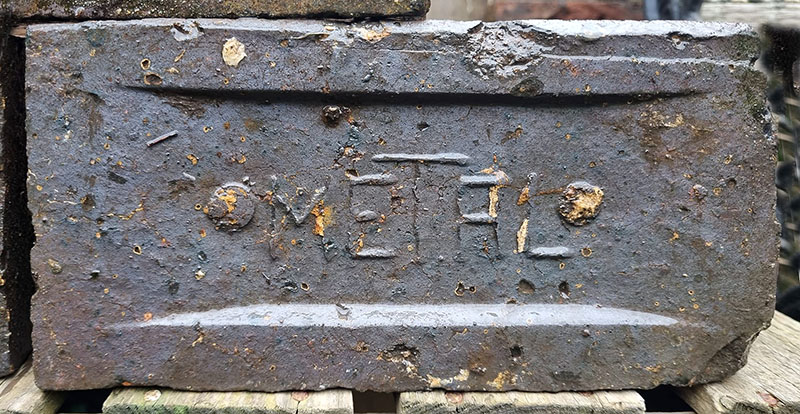
Photo by Michael Kemp.
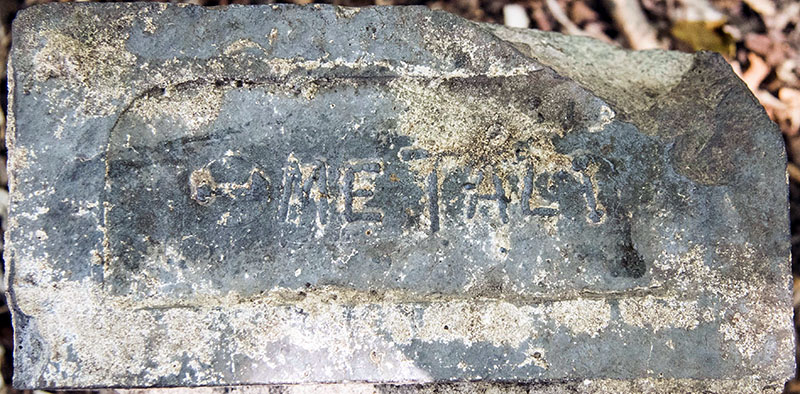
Photo by Michael Brown. Found at Milton Country Park, near Cambridge.
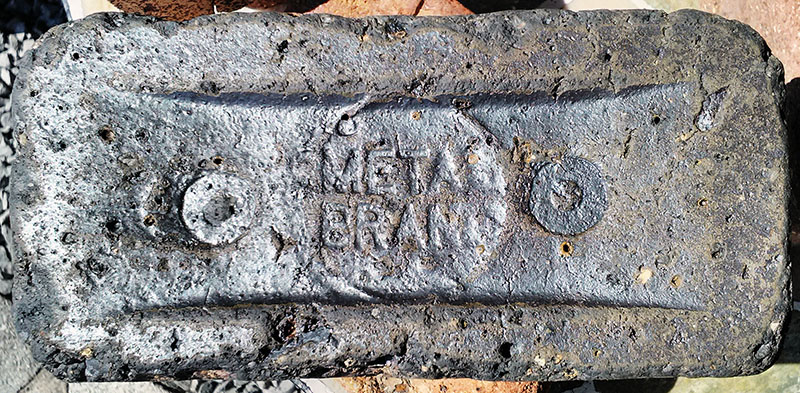
Photo by Beverley Pearson.
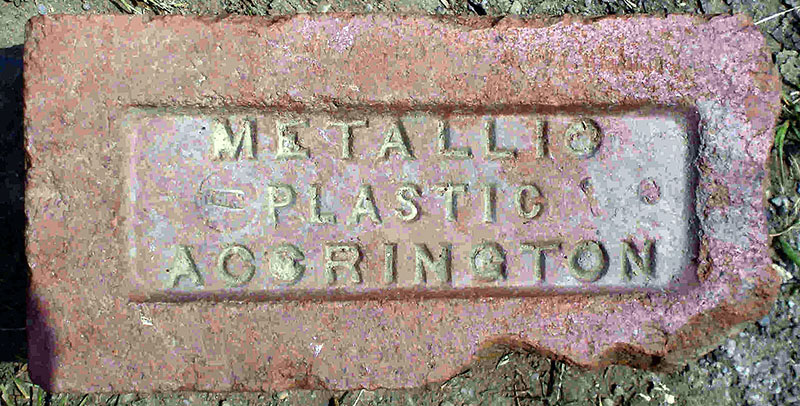
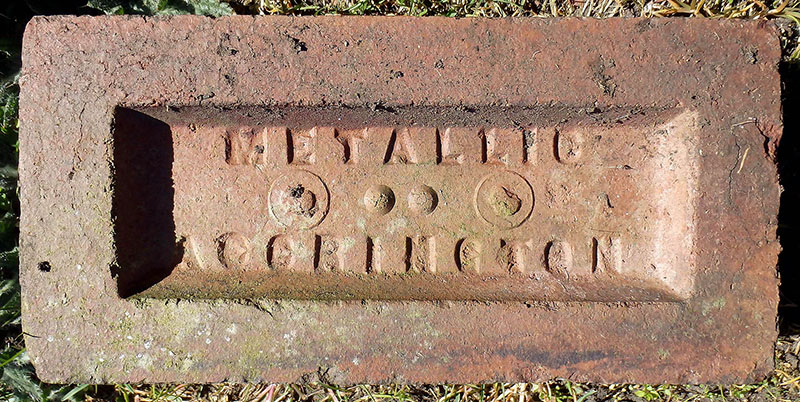
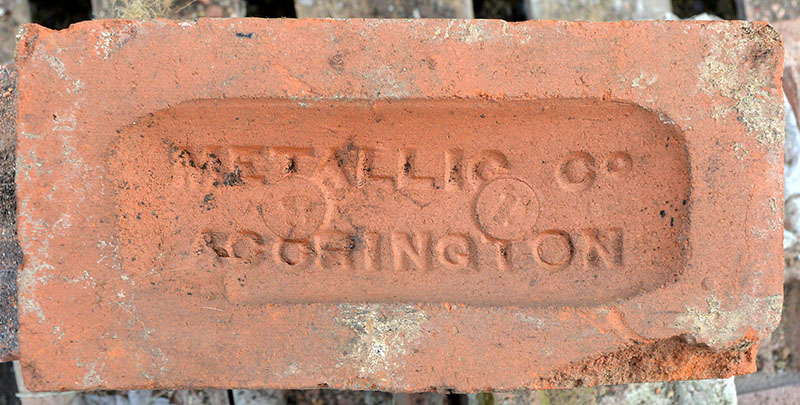
Photos by courtesy of the Frank Lawson collection.
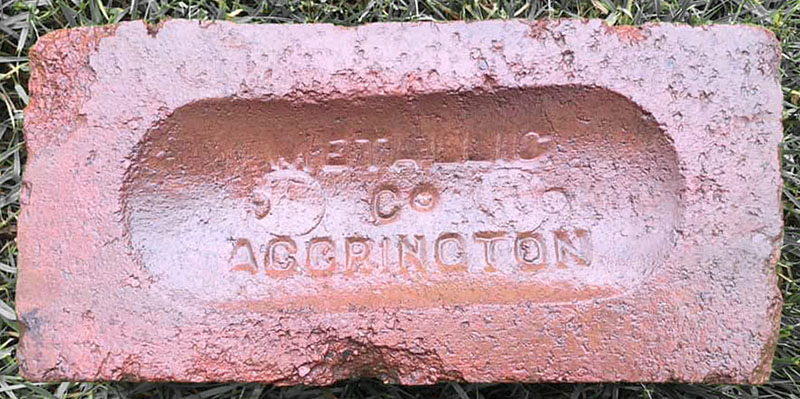
Photo by Jason Stott.
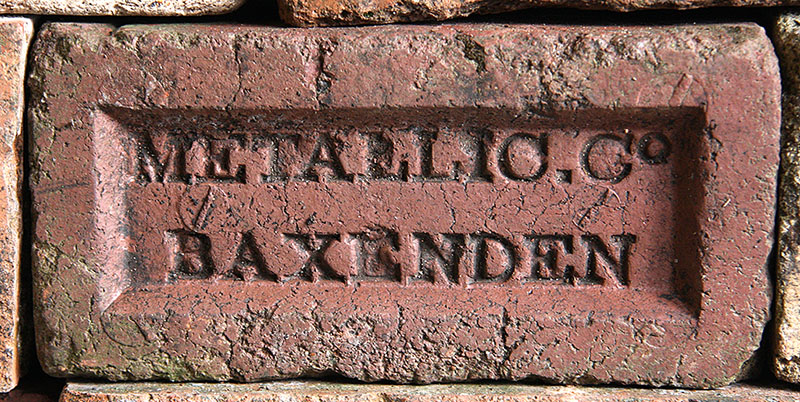
Photo by David Kitching.
Baxenden Metallic Brick Co., Baxenden, Accrington, Lancs, which according to the London Gazette went into liquidation in 1909. Some of their bricks were stamped "Metallic Baxenden", though strictly speaking the works was at Catclough in the village of Rising Bridge. Info by Colin Driver.
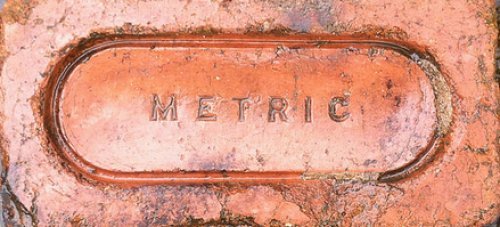
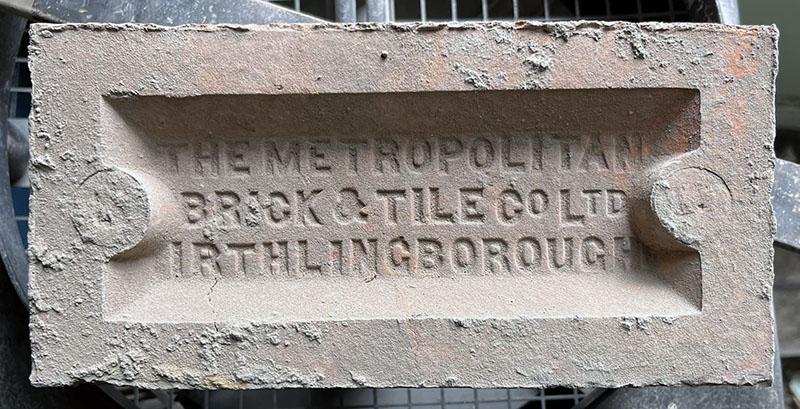
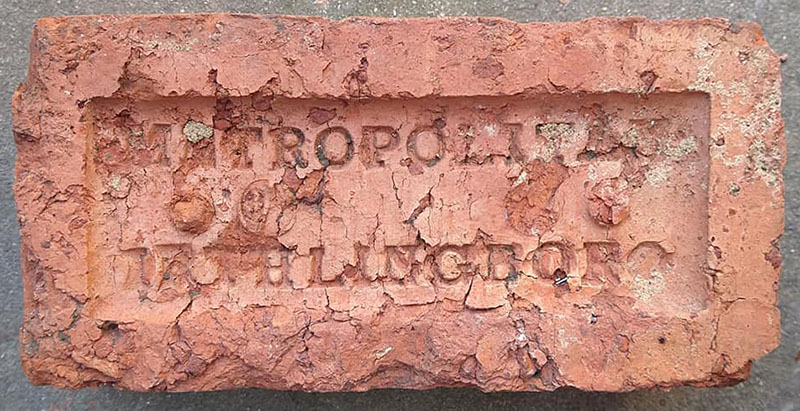
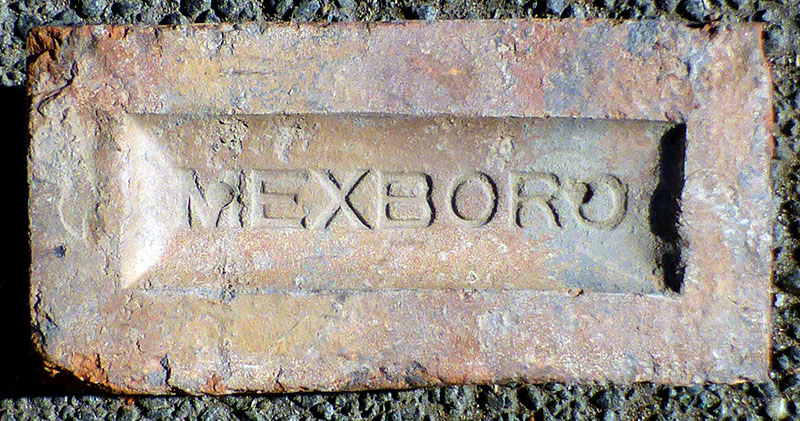
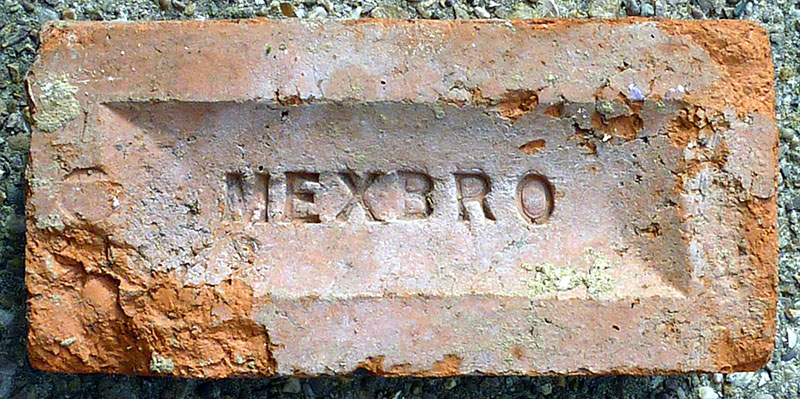
Mexborough Brick Works Ltd., Dolcliffe Road, Mexborough, Rotherham. White's Sheffield & Rotherham Directory 1901. Photos by Martyn Fretwell.